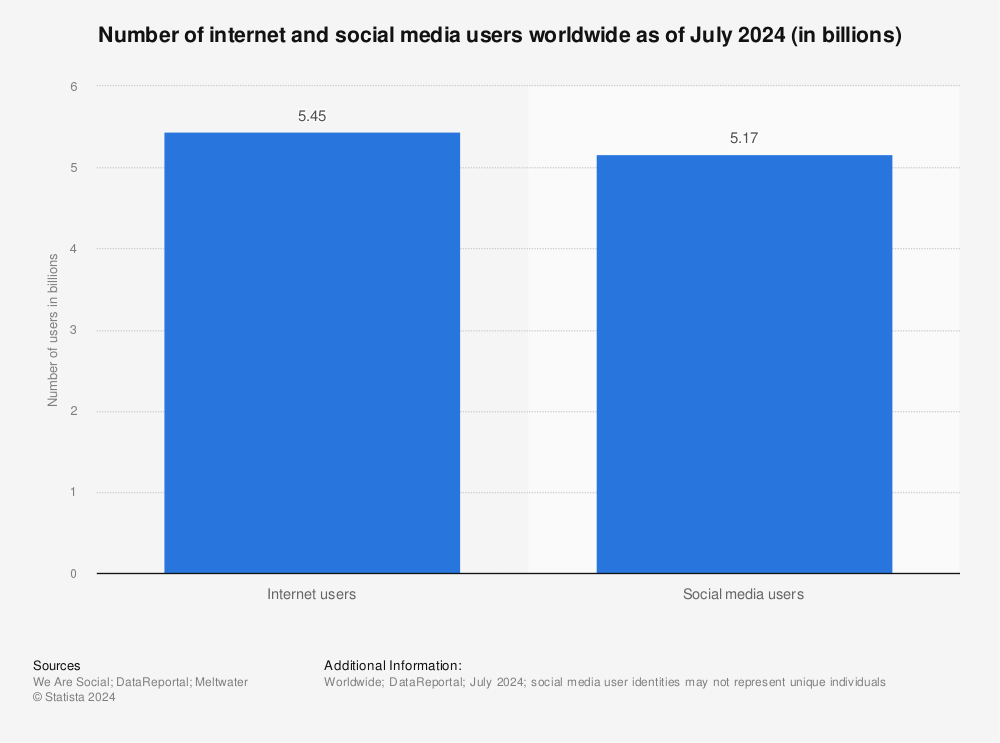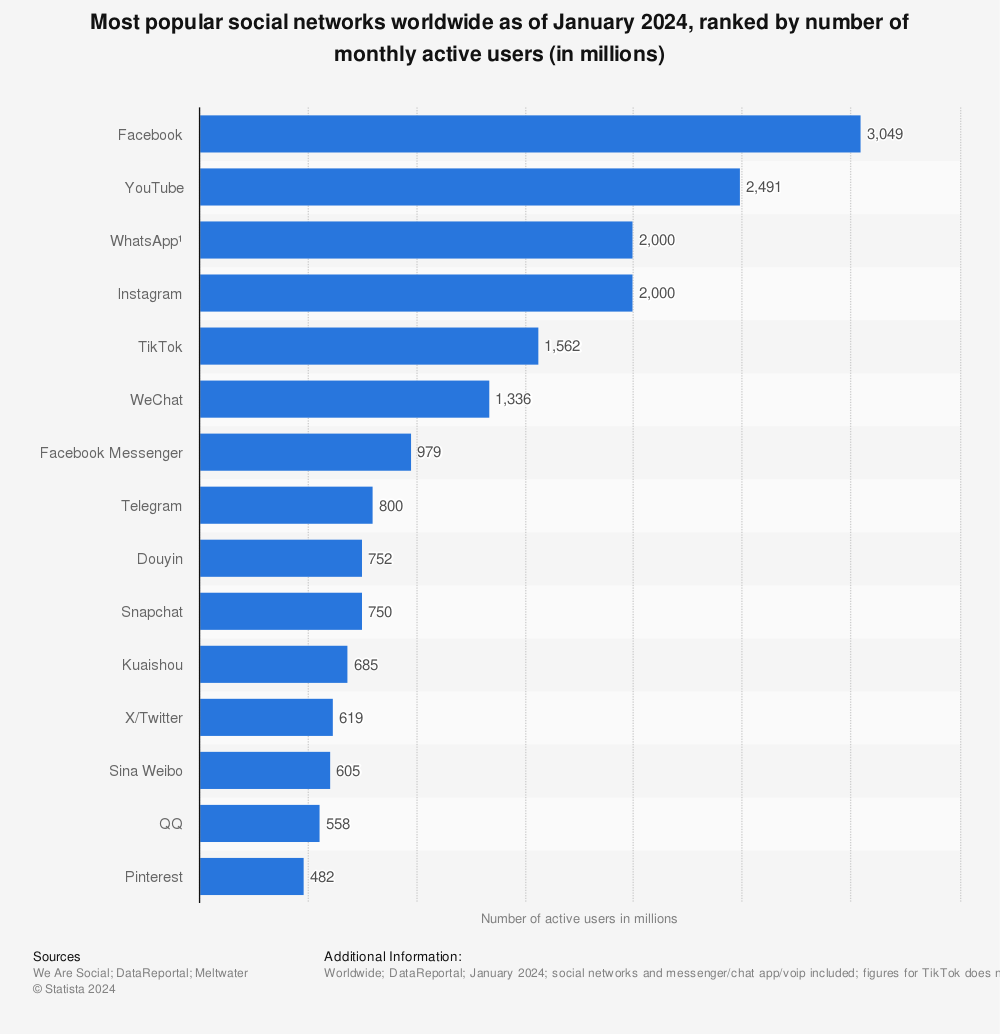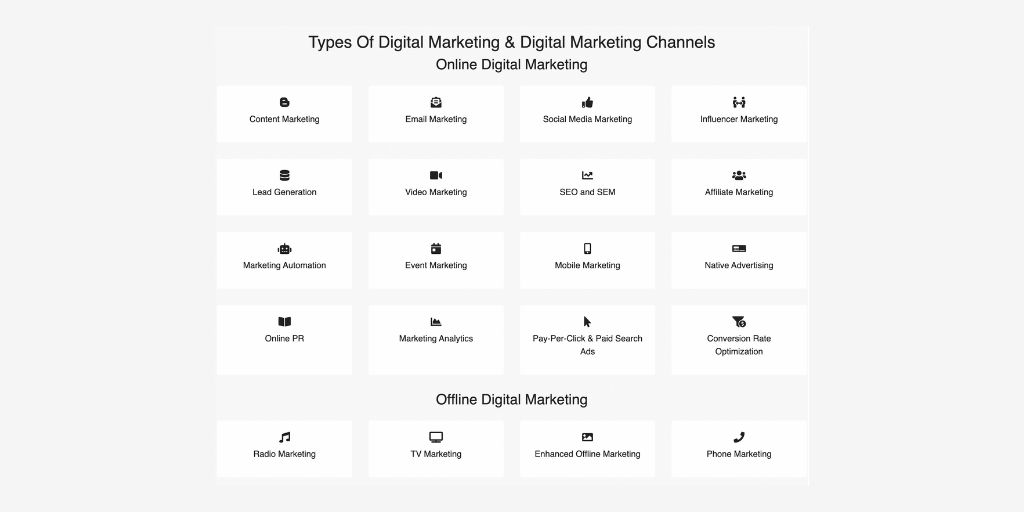
updated 6/20/2022 ⎮ 71 min read ⎮ Digital marketing
In this digital marketing blog article, you'll learn the who, what, why, and how of digital marketing for small businesses. Find out what digital marketing is, why digital marketing is important, learn about the types of digital marketing, digital marketing tactics, how to set digital marketing goals, how to create a digital marketing strategy, and more in this marketing 101 presentation. You will learn everything you need to know to successfully leverage digital marketing for your small business in this small business digital marketing guide.
Digital Marketing Definition: What Is Digital Marketing?
Digital marketing includes all marketing efforts that involve the use of an electronic device.
When you get down to it, digital marketing is simply marketing. It's how businesses convey a message to prospects and customers. The term digital marketing often is used synonymously with online marketing. However, digital marketing can be done online and offline.
In this digital marketing 101 article, we break down and explain everything you need to know as a small business owner to get started with digital marketing.
Why Is Digital Marketing Important?
Digital marketing has a lot of benefits over traditional marketing methods. Digital marketing helps you reach larger audiences, is more cost-effective, and makes it easy to measure success and make data-driven business decisions.
Marketing in general is important for any business because it's about connecting with people, attracting new customers, and retaining existing customers. It’s about communicating the value you give with your target audience.
Digital marketing allows you to meet people where they are and target them more specifically. Today people spend a great amount of time of their day on digital devices and on the internet.
Digital marketing supports your small business goals by attracting leads, and converting prospects into customers using digital technology.
Chances are you already do digital marketing. When you have a business website, send out emails, or have social media accounts for your small business, all that is digital marketing.
With how accessible the internet is today, would you believe me if I told you the number of people who go online every day is still increasing? It is. In fact, "constant" internet usage among adults increased by 5% in just the last three years, according to the Pew Research Center.
4.66 billion people use the internet worldwide. That’s almost 60% of the world population. And the number of active internet users is still increasing by 11 users per second. This means the digital population increases by 1 million users each day.
Moreover, the way people shop and buy really has changed, too. This means traditional offline marketing isn't as effective as it used to be.
Google and Facebook generate more revenue than any traditional media company because they control more eyeballs. That’s why digital marketing matters. It is where the attention is.
Why Do You Need Digital Marketing As A Small Business?
As a small business, it can be more challenging to promote and market your business. There are marketing challenges small businesses have to overcome that big businesses don't have.
Digital marketing is more cost efficient and effective than traditional marketing and allows you to compete better. It allows you to monitor, measure, analyze and test the effectiveness of your efforts faster and more accurately. You can use marketing analytics tools and check your success in terms of your ROI for all your digital marketing campaigns.
That’s something you couldn't do with traditional marking. It makes the best use of your precious time and gets you the best results for your invested resources.
The Top 10 Benefits Of Digital Marketing For Small Businesses
Why do small businesses need digital marketing? There are a variety of key benefits of digital marketing. Let's dive into the top 10 key benefits of digital marketing now.
-
Digital Marketing Benefit #1: You can focus only on the people most likely to buy your product or service.
With digital marketing, you have accessto superior targeting methods that are more detailed and specific. Digital marketing gives you full control over who sees your content and how they react, engage, and behave. -
Digital Marketing Benefit #2: You get detailed and actionable analytics data because digital marketing is measurable.
With marketing analytics, you get detailed insights about people's behavior on your digital assets like your website, email list, or social media channels. These insights help you to prioritize marketing channels and tweak your digital marketing strategy and tactics. It gives you the ability to tailor your digital marketing to your audience and make data-driven decisions in your small business. -
Digital Marketing Benefit #3: You get more bang for your buck because digital marketing is more cost-effective.
Digital marketing allows you to put yourself out there and be visible to millions of people by solely investing your time to create content. If you want to run digital ads, you can also benefit from the cost-effectiveness of digital marketing. For just a few dollars, you can run an ad online. Digital marketing has lowered a lot of entry barriers for small businesses to compete and the cost barrier being one of the biggest. -
Digital Marketing Benefit #4: You can scale and automate your lead generation.
Digital marketing makes it easier for people to find you and you don't have to rely on outbound strategies anymore. Thanks to landing pages, web forms, lead magnets, and automation, you can streamline your lead generation and put it on autopilot. -
Digital Marketing Benefit #5: You can compete with bigger brands.
Digital marketing gives you plenty of opportunities to outrank the big players. Learn more about how digital marketing helps you to overcome the marketing challenge of competing with big companies as a small business. -
Digital Marketing Benefit #6: You can easily attribute your results to your marketing efforts with attribution modeling.
The right digital marketing tools allow you to trace back your results to your digital marketing efforts. You can see the impact of each action you took and how well-adapted your digital marketing tactics are to help you reach your digital marketing goals. Digital marketing takes out the guesswork. -
Digital Marketing Benefit #7:You can adapt and pivot more easily.
Leveraging digital marketing helps your small business to stay agile and you'll be able to adapt and change quicker. Being able to pivot more easily and adapt a new strategy is vital in today's fast-paced world. -
Digital Marketing Benefit #8: You can increase your brand awareness by a lot.
Digital marketing gives you access to more audiences and you get to segment these audiences and resonate better. Personalization allows you to break to the noise instead of just adding to the noise and speak to groups of people in a targeted way. This way you can increase brand awareness for your small business more efficiently. -
Digital Marketing Benefit #9: You can boost your conversions.
Continuously refining your methods improves your conversion rate. You can consistenly develop better strategies to improve your conversion rate and attract more buyers. -
Digital Marketing Benefit #10: You can increase engagement, social sharing, and word-of-mouth.
Digital marketing makes it easy to get people to engage with your brand and you can engage with them, too. It allows you to measure and channel sharing and word-of-mouth.
Types Of Digital Marketing & Digital Marketing Channels
What does digital marketing includes? Here's a comprehensive rundown of the different types of digital marketing, digital marketing channels, and digital marketing tactics involved in each one. You'll gain an in-depth understanding of digital marketing and all the components of any digital marketing category.
Social Media Marketing
In the following social media marketing 101 section, you'll get a social media 101 for small businesses.
What Is Social Media Marketing?
Social media marketing is a form of digital marketing that involves creating and sharing content on social media platforms to achieve your marketing and branding goals.
Social media marketing includes activities like posting text, image, and video updates, and other engaging content to reach people organically.
It also includes driving audience engagement through paid social media advertising.
Why Do I Need Social Media Marketing? Why Is Social Media Marketing Important?
Social media marketing is a powerful way for small businesses to reach prospects and customers.
Chances are, your customers are already interacting with other brands through social media, and if you're not speaking directly to your audience through social media platforms as well, you're missing out.
Great marketing on social media can bring remarkable success to your small business, create devoted brand advocates, and even drive leads and sales.
Which Social Media Platforms Should I Use For My Small Business?
Have a look at this statistic listing the most popular social networks worldwide ranked by the number of active users.
This should give you a feeling of which social networks to prioritize in your social media marketing strategy. The more users a social network has, the more people can potentially see your content and engage with you.
However, you should always know where your target audience spends the most time on. Maybe there is a niche social network that a lot of the people in your target audience use. Then you should definitely be on there and prioritize that. What's best for you really depends on who your target audience is.
That's why having detailed buyer personas is so important. Having a buyer persona makes your marketing stronger because you then have a person you can envision and talk to like a human does. You can download our free buyer persona template.
You can learn more about how to leverage social media marketing in this audio clip.
Listen to the full podcast episode here.
How Can I Get Started With Social Media Marketing?
Determine your goals and ask yourself the following questions:
- What are you hoping to achieve with social media marketing? Here a few examples for goals.
- Raise brand awareness
- Increase your reach
- Enhance public relations
- Research and development
- Get more website traffic
- Get more engagement e.g. messages, mentions, tags, video views, likes, comments, shares, retweets, event responses, offer claims, followers, subscribers, page likes
- Generate more leads and attract more customers
- Customer service and customer support
- Build your brand reputation, collect reviews and testimonials
- Get more sales e.g. catalog sales, store traffic
- Build your own community
- Encourage user generated content e.g. through branded hashtags
- Get brand advocates
- Who is your target audience you want to communicate with?
- Where does your target audience hang out and how do they use social media?
- What message do you want to send to your audience via social media marketing?
Once you've figured that out and you are on the right social media platforms for your business.
Here's what comes next.
Post frequently, educate, inspire, and engage your audience. It is a two way communication. Don't just you put your content out there without caring and showing interest in others as well. Share helpful content that is not your own as well. Reply to every comment. Be human and be personal.
Depending on the social network, to post frequently can mean very different things.
The organic reach on Facebook, for instance, is close to zero nowadays. Facebook is so established that they don't need to show your posts to your whole audience, if you don't pay for it to happen.
Twitter has a much better and wider organic reach and your tweets can even still be seen by your audience days later sometimes. The same goes for LinkedIn.
In general you can say, the newer a social network is, the better the organic reach is in that social network. Newer social networks want and need more users, and make it as easy for you as possible to reach as many people as possible. They also make it super easy for you to invite your friends or even got features that allow you to invite your whole contact list at once. That's what Facebook did in its early days and this feature accounted for the massive growth in the number of users of Facebook.
Aim to post at least once a day on every social network you are on. That way a person has at least one chance a day to see fresh content from you and engage with you. Your subscribers and followers want to hear from you and if they don't, chances are they'll hear from your competitors.
Also consider to recycle and repurpose your social media content and post it again. That way you give everybody a chance to keep up and engage with you.
What Is The Audience Like On The Different Social Media Platforms?
Not every social media platform makes sense for every business.
Facebook is still the world’s most popular social network and makes sense for nearly everyone to have. The same goes for Twitter and LinkedIn which both have a way better organic reach in comparison to Facebook. LinkedIn is best for business to business (B2B) but works very well for business to consumer (B2C) businesses as well.
YouTube is great because you need to have video content and it's a great platform for almost every businesses. It's the 2nd most used website on the web and 2nd largest search engine. You can use your video content in a multitude of ways and it makes sense to build a following there.
Instagram is best for image heavy industries. Pinterest is best when your business targets women and people who identify with primarily "feminine" preferences. Snapchat and TikTok are still mainly used by kids and teenagers but now also shift more towards an older audience as well.
Each social network also requires a different tone and style. Whereas LinkedIn is a bit more serious, Snapchat is super casual and has a younger audience. You get the point. Customize, adjust, and tailor your content for each social network to get the most out of your efforts.
I recommend to start with 1-2 social media channels when you’re just starting out. Focus on them, showcase your expertise really well, be close and approachable for your audience, and post several times daily.
When you have the time, helpers, and budget to expand your social media activity, do that later.
Many people use social networks to discover, research and educate themselves. It’s no longer just for fun and entertainment.
Use this as an opportunity to present yourself and your brand how you want to be seen. Use it not just to post your own content but to truly engage and interact with people and create peer-to-peer sharing opportunities and create a togetherness.
The more people engage with your content, the more likely they will share it and become customers. The shares also hopefully influence their friends to become your fans and customers too.
As you can see, each social media network is different and when you want to seriously engage in this digital marketing channel, you need a professional social media marketing strategy.
Learn more about Clubhouse Marketing in episode 39 and LinkedIn Marketing in episode 40 of the Dragon Digital Marketing Podcast.
Which Tools For Social Media Marketing Can I Use ?
Here's how to get this luxury for free. Twitter has it’s own dashboard tool called TweetDeck, where you can manage your activities and schedule your posts in advance all for free and integrated in Twitter’s interface.
You could then use another free tool like Zapier to automatically cross post your Twitter posts on other platforms.
This allows you to plan ahead and work in the most efficient way.
Another way to do it is to post and manage your social media accounts through your Customer Relationship Management (CRM) system. Tools like the Hubspot CRM allow you to connect your Facebook Messenger and chat with your audience through the CRM, and tools like SharpSpring can even connect with almost all of your social media platforms and you can schedule your posts for all of them in advance while managing your customer relationships.
Social Media Marketing Conclusion
The question isn’t whether you need social media marketing. It’s how actively you want to engage and how much time and resources you can dedicate to it. The more the better. Because if your customers can’t find you or you’re not very active in their preferred social media platform, they’ll find a competitor instead who is there and active and happy to fill the void.
This makes social media marketing a must in every digital marketing strategy. It’s just more natural for people to contact you on a familiar social channel, than contact you through your customer support or via phone. Don’t you agree?
It also makes sense to heavily invest in organic social media growth because you can build yourself a powerful direct sales cannel. Your followers are most likely people who are ready to buy because they are interested in what you offer and want to be connected with you to stay up to date.
Influencer Marketing
What Is Influencer Marketing And Why Does It Matter? What Does Influencer Marketing Mean?
Here's a simple influencer marketing definition: Influencer marketing is a fast, flexible and highly cost-effective way to reach more of your target audience, build brand awareness, increase your traffic, drive sales, and add value to your audience through co-created content from influencers.
Nothing draws us like the trust we feel toward someone we are inspired to follow.
100 years ago, American actors and athletes lent their smiling faces to newspaper ads pitching everything from soap to cigars. In the age of TV, we loved our big media heartthrobs and heroes, and we trusted their opinions. If Michael Jackson drank Pepsi and Michael Jordan wore Nike, so did we.
Influencer marketing is not the same as celebrity endorsements and so much more than offering someone with an audience money to say good things about your brand, products or services.
What Are Influencers?
Influencers are individuals who are influential in a specific niche to the point where they can affect buying decisions. They have influence because they have authority, expertise, knowledge, relationships or a position of power in their space.
What are some influencer marketing examples?
Many younger consumers don't watch TV dramas and they may not know who LeBron James is but millions of young women can tell you what makeup Amanda Steele is wearing, and millions of LGBTQ+ twenty-somethings can tell you what Jazz Jennings recommends.
Does that mean influencer marketing is for just millennial and Gen Z followers? Not at all. The market for RV travel is focused on seniors. Sellers of products for this market can partner with hundreds of influencers whose followers want to see fresh content on remote camping, RV kitchen tools or just life on the road.
What Does Influencer Marketing Do?
Influencer marketing can bring high-quality, relevant and targeted traffic and customers to your small business. It can be powerful and effective because recommendations from influencers are like recommendations from a friend or family members. That's because influencers build relationships with their audience.
When influencers communicate your messaging, it appears more trustworthy and unbiased than ads or other marketing messages that are published by your business itself.
People want to hear authentic voices and are more skeptical of marketing and sales messages and claims. Hearing your messages from influencers gives you social proof - a powerful factor of persuasion.
Imagine dozens and hundreds and potentially thousands of voices having authentic conversations about your small business, brand, product or service in a way that your brand voice never could.
It's a great way to get more brand awareness, reach new audiences, and generate more sales and conversions.
Influencers can also help you to get more repeat purchases, drive customer loyalty, and maximize the customer lifetime value (CLV).
What Is Social Media Influencer Marketing?
Social media influencer marketing is when influencers help you to promote your product, service, business or brand via social media and not via their email list, word-of-mouth, blog content, podcast, television, columns, or other channels.
By partnering with an established social media influencer, you can reach a wider audience to generate leads and engage contacts at strategic points in the buyer's journey. You can increase your traffic, introduce new products, grow brand awareness with new prospects and build trust with existing customers.
Best of all, you can boost your social media strategy, establish partnerships and ultimately grow your small business.
How To Create An Influencer Marketing Strategy?
This is how you create an influencer marketing strategy for your small business in 9 simple steps:
1. Set your goals and decide on your message
In order for your plan of action to get you where you want to be, you need to first know where you want to get. Here are some examples for goals you might have:
- Attract a younger audience and expand your customer base to new demographics
- Expand into a new market segment of your target marketing with a product innovation or a new service offering
Now, go ahead and define key performance indicators (KPIs), which are metrics to measure your success with.
2. Define your target audience
Before you can even consider doing influencer marketing for your small business, you have to be crystal clear about who your audience is and have detailed buyer personas. You can use our free buyer persona template to create personas of your ideal customers.
3. Set your budget and think of how you manage the relationships
Depending on your budget, you can consider working with bigger influencers with massive followings or micro influencers with less than 2,000 followers or anything in between.
4. Research influencers that are a good fit, review their work and find out their rates
Find influencers whose content and followers align with your product or service and target audience.
If you know your buyer personas, you can look for influencers using search engines, industry forums, or by just browsing influencer social media platforms like Tiktok, Instagram and YouTube.
You can also use dedicated influencer marketing tools such as BuzzSumo, KeyHole and FollowerWonk. And you can check out influencer marketplaces such as InfluencerMarketingHub, TapInfluence and Influencity.
5. Influencer outreach: How to contact and hire influencers
Look for the influencer's contact information. For small influencers, you can direct message them via a private message right on the platform. For larger influencers, they may have a booking agent, press team, etc. and it's a formal way to contact them. Before you reach out, make sure that they are legit and have worked with similar companies before. Check the engagement to follower ratio and browse through their content to look out for spammy comments that don't look authentic and other warning signals not to work with them.
6. Develop the campaign messaging
You want to develop the messaging for your influencer marketing campaign and write out exactly what you want your influencers to say, write and show. You want to define what the influencers should call their audience to action for and finalize the expectations with them.
7. Pay your influencer
Compensate and reward your influencer for the campaign. The campaign is now over and it's time to measure the effectiveness.
8. Measure your results
You can work with marketing analytics tools to keep track of your metrics, measure your success, and do a gap analysis of your results with the help of the key performance indicators (KPI's) that you have defined in Step 1.
9. Review, refine and tweak your influencer marketing strategy
Only if you measure your results, you'll be able to determine the effectiveness of your efforts and are able to attribute results and compare the campaign performance with other marketing channels.
Influencer Marketing Conclusion
Here's what you need to know about Influencer Marketing:
- It's here to stay.
- It's no longer just about celebrities. There are macro influencers, middle influencers, micro influencers, brand ambassadors, brand advocates, employees, etc. who can act as influencers for your brand and your small business.
- It's not about you. It's about trust.
- To get started with influencer marketing for your small business, you have to know your audience really well and have detailed buyer personas. You also need to set clear goals and define how you will measure and track them.
Listen to our podcast episode about social media marketing tips and influencer marketing on Instagram with Derren Ohanian.
Email Marketing
Read our complete 101 guide on Email Marketing For Small Business here.
What Is Email Marketing?
Email marketing is the highly effective digital marketing strategy of sending emails to your interested people, leads, prospects and customers.
Try email marketing for free now.
Why Do I Need Email Marketing? Why Is Email Marketing Important?
Email marketing may seem archaic to you in comparison to all the new emerging technologies. There are chatbots, social media, artificial intelligence, virtual and augmented reality. Nevertheless, you still need email marketing.
Here’s why.
No matter where you’re doing business and who you’re targeting, chances are, your customers are using email. Have a look at this statistic. There are 3.9 billion email users worldwide.

99% of consumers check their email daily. And for 58% of people it’s the first check of their day.
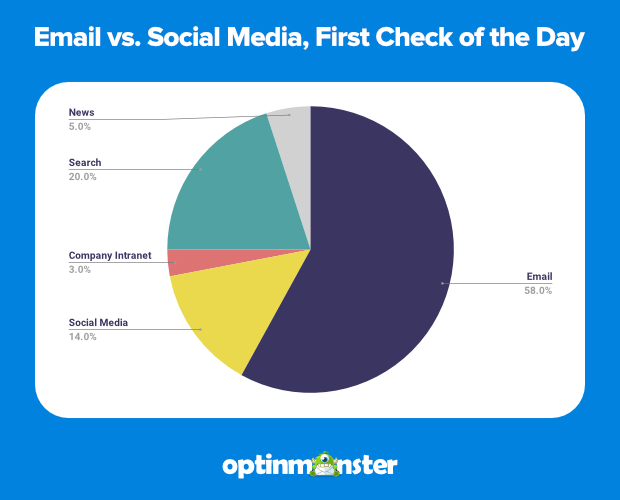
No matter how small your business is, you have the power to reach people through email marketing 24 hours a day, 7 days a week, 365 days a year.
Email marketing also has a massive return on investment. For every dollar you spend, you get 42 dollars back on average.

Another benefit of email marketing is that your email list is all yours. It belongs to no one but you. Any social media platform could be suspended or deleted at any time, for any reason, without notice. However, no one can take the leads on your email list away from you.
Email marketing still remains one of the most powerful and thoroughly understood forms of digital communication. It remains one of the most effective ways to nurture your leads and turn them into your customers.
Here are 15 benefits of email marketing at a glance:
- Global reach
- Immediate communication
- High ROI
- Low cost
- You own your email list
- Preferred and thoroughly understood method of communication
- Direct communication
- Can be used for surveys
- Easy to personalize
- Easy to automate
- Easy to group people into different buckets and serve content in a targeted way
- Easy to setup and run
- Easy to track and optimize
- Boosts sales and leads
- Generates website traffic
You can use this template to strategically organize your email marketing.
Get started with email marketing for free right now.
How Can I Get Started With Email Marketing?
I can see why you want to get started with email marketing asap now, if you haven’t already.
Here’s how you can start doing email marketing in 3 easy steps:
- Step 1: You need an email list
You start with building your email list. To do that you’ll need an email service provider.
There are a number of different email marketing services out there. Each one is suitable for different types of email marketing goals.
ActiveCampaign is the best email marketing software for small businesses. It makes it super easy to start collecting leads right away. The 14 day free trial doesn't require a credit card, so you can get started with building your email list right now. - Step 2: Build your list by placing opt in forms on your site
Create an opt in form and place it on your website, so your visitors can enter their name and email address and subscribe to your awesome updates. - Step 3:Grow your list with lead magnets
To grow your email list even more, you’ll need something that motivates your visitors to sign up for your email news. You can give away something useful and actionable for free in exchange for the email address. This is called a freebie or a lead magnet.
Here are 13 examples for lead magnets:- Ebook
- Cheat sheet of tips or resources
- Template or worksheet
- White paper
- Case study
- Webinar
- Trial, sample, or product demo
- Quote or consultation
- Quiz or a self-assessment
- Coupon
- Checklist
- How-to guide
- Invitation to an event
Now you can start sending out emails. Congratulations! Here are some email copywriting tips to make your marketing emails more powerful and effective.
Successful email campaigns are conversational, engaging, informative, entertaining, relevant, coordinated across channels, strategic, and showcase your trustworthiness.
If you need content ideas of what to send, check out this free template to strategically organize your email marketing.
Get started with email marketing for free right now.
Which Email Marketing Tools Can I Use?
There are a number of different email marketing tools out there. To learn more, see our complete 101 guide on Email Marketing For Small Business or listen to our podcast episode Small Business Email Marketing Made Easy!
Lead Generation
What Is Lead Generation? What Is A Lead?
A lead is any person or company that shows interest in your products or services in some way, shape, or form.
Lead generation is the process of attracting and converting strangers and prospects into someone who has shown interest in your company's products or services.
This is what a holistic lead generation strategy looks like. You want to stimulate and capture people’s interest in your products or services to develop your sales pipeline. You want to nurture your leads throughout your buyers journey until they have become your customers, and then keep on delighting them, and foster the customer relationship to maximize your customer retention.
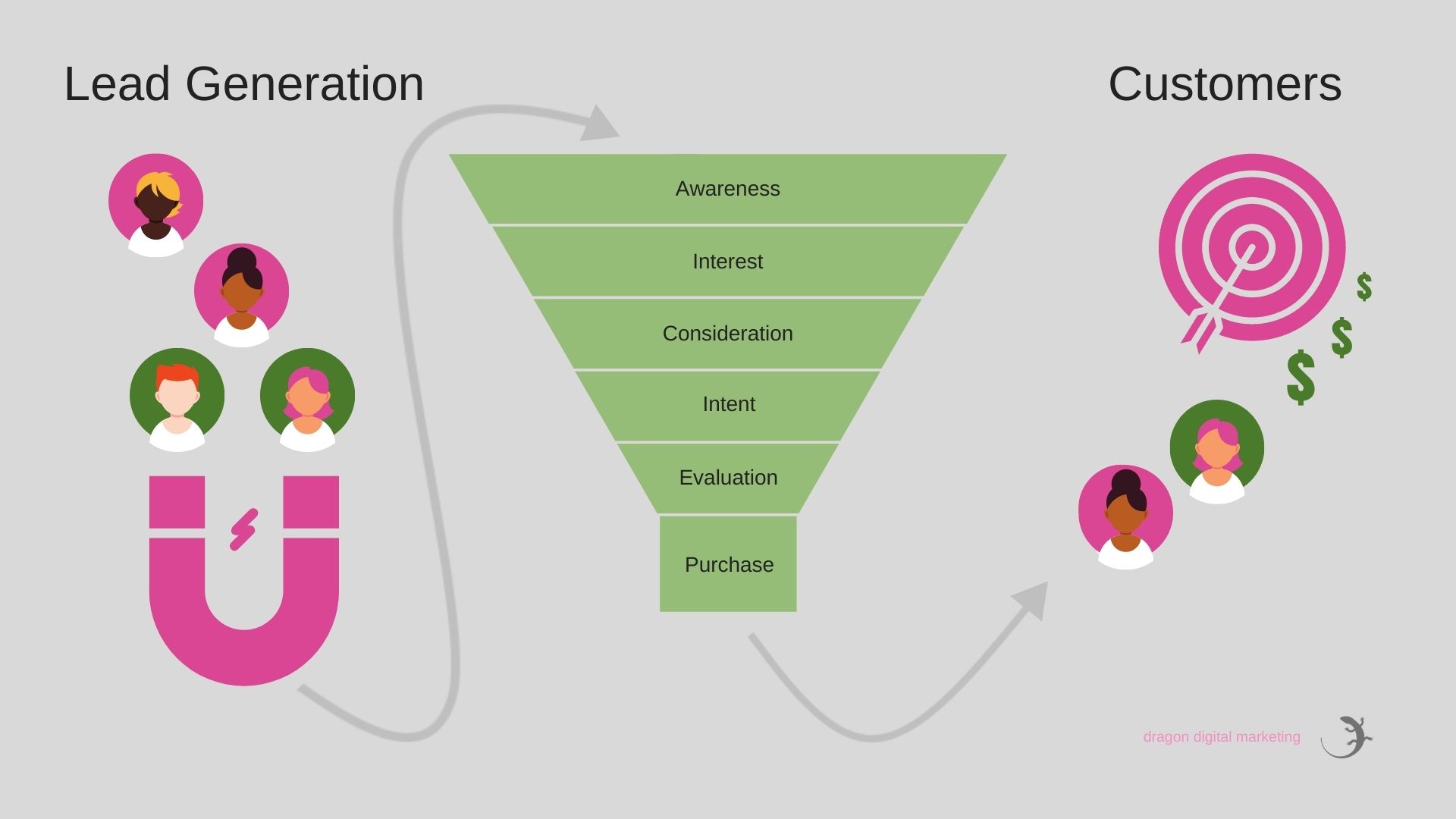
Leads typically hear from a business after opening communication e.g. by submitting personal information for an offer, trial, or subscription, instead of getting a random cold call from someone who purchased their contact information.
For the leads that fill out a form, they often do so in exchange for some relevant content or a compelling offer.
To be successful in generating leads for your business, you need to have lead magnets. Lead magnets are relevant and compelling pieces of content that you offer for free in exchange for contact information like a name and email address. Interested people will enter their contact information to get your lead magnet, and you’ll then have permission to contact them.
Some examples of lead magnets are job applications, actionable and comprehensive guides, useful templates, coupons with great deals, helpful ebooks, and other amazing online content.
See how content marketing is closely related to lead generation?
Lead generation has been undergoing substantial changes in recent years and nowadays often uses digital marketing channels. This is because of the rise of new online and social techniques. In particular, the abundance of information readily available online has caused buyers to be better informed and more self-directed.
You need to offer your own high-quality and super valuable content to your audience, to showcase your credibility and expertise and make them trust you enough to give you permission to contact them.
Why Is Lead Generation Important?
The buying process has changed, and you need to find new ways to reach potential customers and get heard through the noise.
Instead of finding customers with mass advertising, you now have to focus on being found and learn to build continuous customer relationships.
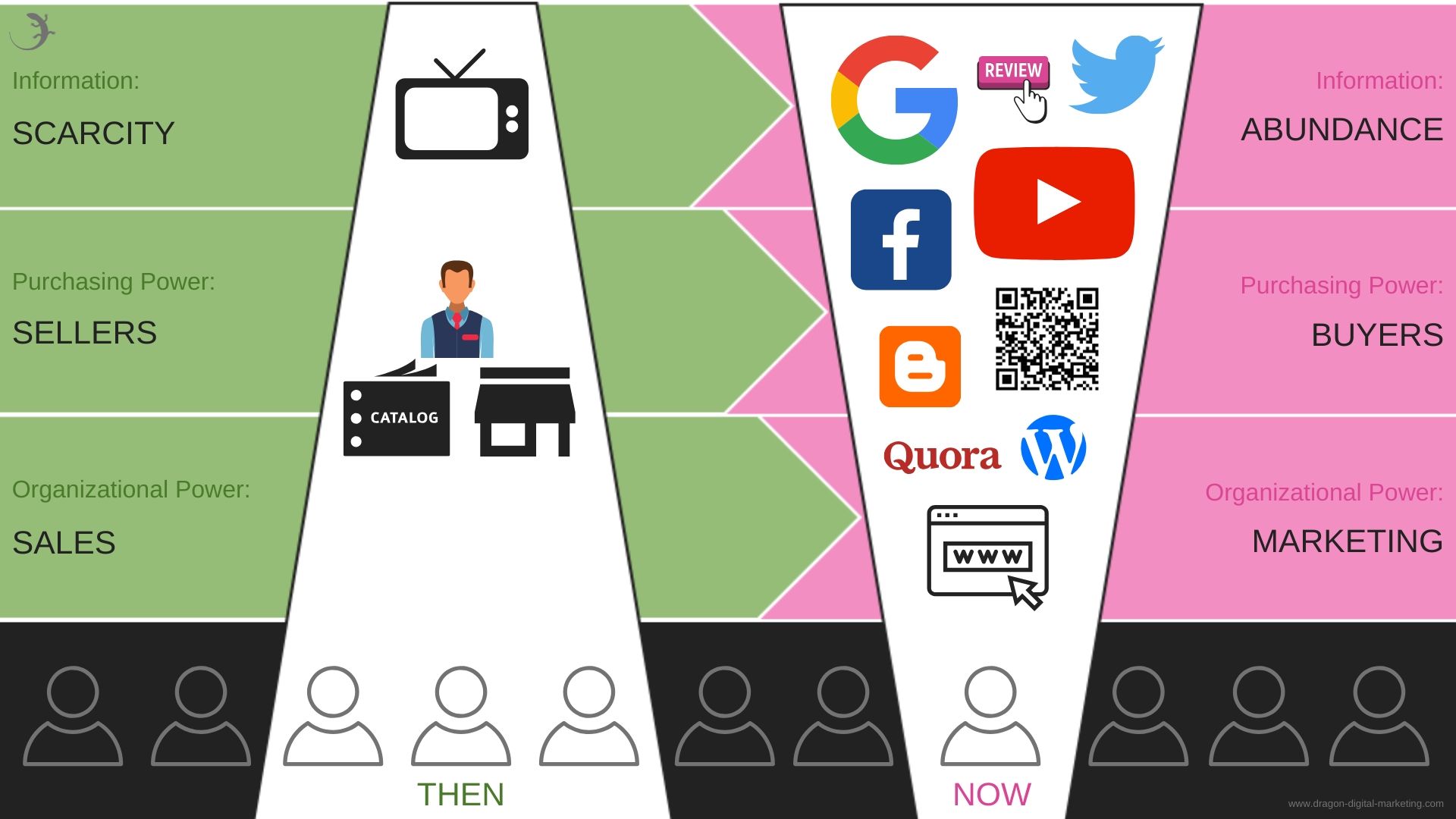
Lead generation is important because it enables your website and thus your business to get enormous traffic. It attracts more people to come to your website and learn more about you. This leads to more sales.
If you have a quality lead generation process, it will help you a lot in finding the right customers that your business needs, and increase the number of visitors who convert into your customers.
Why Not Just Buy Leads?
I understand that you want to fill your marketing and sales funnel quicker, and have the temptation or think about buying leads.
It’s a lot easier and takes far less time and effort, right? Think again! When is going the easy way ever right? Do what is right, not what is easy. The easy way out usually leads back in.
First and foremost, any leads you buy don't actually know you. Typically, they've opted in at some other site when signing up for something, and didn't actually opt into receiving anything from you.
Any messages you send them are therefore unwanted messages. Sending unwanted messages is intrusive. It means you’re interrupting them and not making a good impression.
Chances are those blindsided people will mark your messages as spam. This doesn’t only filter out future messages from you in their inbox. This info is also shared with their email provider and once enough people flag your messages and spam, you go on a kind of blacklist that’s shared with other email providers. Your email deliverability and IP reputation will be harmed, and it is really really hard to get off that list once your reputation is ruined.
Besides all that, it is also very expensive and will cost you much more than creating amazing content that will actually build up your reputation and work in your favor.
"Nothing worth having comes easy." Tweet this quote
How Can I Generate Leads In 5 Simple Steps?
Here's an actionable step-by-step guide how you can go about it and start generating leads right now in 5 simple steps:
- Step 1: Identify your target audience
Know who you want to target and know your ideal customer.
Having an ideal customer avatar, also called a buyer persona, is incredibly helpful for that. Make your marketing stronger and download our free buyer persona template if you haven’t already. - Step 2: Create lead magnets
Create amazing pieces of educational content that address your lead’s pain points, solve their problems with actionable tips, and give them all they want and need.
Here are 13 examples for lead magnets:
- Ebook
- Cheat sheet of tips or resources
- Template or worksheet
- White paper
- Case study
- Webinar
- Trial, sample, or product demo
- Quote or consultation
- Quiz or a self-assessment
- Coupon
- Checklist
- How-to guide
- Invitation to an event
- Step 3: Promote your content and deliver it to your target audience
You need a promotional plan that will get your content in front of your target audience.
Consider using your website, blog, and social media accounts for that. Also think of speaking engagements, industry events, current customer referrals, ads, and traditional marketing methods. - Step 4: Create your funnel
Now you need to have a plan for collecting the contact information and what you want to do with it once you got it.
First you need to funnel all prospects to a standard form or landing page that encourages them to share their contact information in return for your lead magnet. Use your CRM to keep track of incoming leads and build relationships through email marketing. By cultivating those relationships you can take your leads from one stage to another stage in your funnel until you get the sale.
If you do not have a CRM and email marketing tool yet, check out ActiveCampaign, the best and easy-to-get-started-with email marketing and small business customer relationship management tool. - Step 5: Nurture your leads and engage
After the conversion is before the conversion. You want to rinse and repeat this process to get repeat customers.
In addition to email, social media provides a number of opportunities for small businesses to create conversations as well. Engage your audience and engage with your audience too and nurture the relationship with the people who care about you and show that you care about them.
Leverage your Facebook page, Twitter profile, LinkedIn company page, Pinterest account, or YouTube channel to nurture and engage your leads and customers.
You can also use those channels to find out more about what your audience needs and wants.
The more positive touchpoints your leads have with your over time, the more likely they will trust your brand and eventually buy from you.
Lead generation is a long-term and continuous process. You need to get an efficient system in place using the tips mentioned above.
Check out this related article: 33 Easy Ways To Turn Your Website Into A Lead Generation Website
Learn more about lead generation in our Dragon Digital Marketing Podcast:
Episode #15: Lead generation for small business
Episode #16: 10 Lead Generation Strategies: Lead Generation for Small Business Made Easy
Video Marketing
What Is Video Marketing?
Here’s a video marketing definition: Video marketing is the use of video to market and promote your business, brand, products and services.
With video marketing you can increase engagement on social media, educate your audience, enhance your website, raise brand awareness and drive sales.
Video is also a great medium for storytelling. You can use videos to tell a story about your brand. The story can be about how you’ve helped one of your customers succeed or about yourself and what has led you to start your small business, or any unique story that helps communicate your vision, mission, purpose and culture.
By telling a story on video, it speaks to the viewers emotionally, developing stronger connections and emotional attachment to your brand that goes beyond what your product or service is. You’ll see greater engagement and can build authentic relationships – which helps your customers to develop more confidence toward making their buying decision.
Why Is Video So Effective In Marketing? Why Should You Focus On Video Marketing?
Video marketing can be used to inspire, educate, entertain, motivate and convince your prospects at any point in their buyer's journey. This means you can use video marketing effectively in all stages of the marketing funnel – not just to increase brand awareness, but also to heighten consideration and purchases.
Video – combining audio, moving pictures and possibly text – is the richest form of medium there is. That's what makes it so effective and powerful.
Videos are accessible, easy to digest and provide a high ROI on many digital marketing channels.
Videos have changed how small businesses can market and people can buy, how salespeople can connect and sell, how customer service teams can delight and support customers, and has evolved a lot from just being advertising content.
Modern video marketing in 2021 focuses on content, which your audience readily accepts as valuable.
You may be thinking: "This all sounds great, but I'm not a movie director". You don't need to be.
Because video viewers value authenticity over fancy sets. You don't need a big budget and you don't have to be an expert videographer.
Video Marketing Statistics 2021 show why you should focus on video marketing in 2021:
90% of customers say videos help them make buying decisions.
54% of consumers want to see video content from the brands and businesses they support.
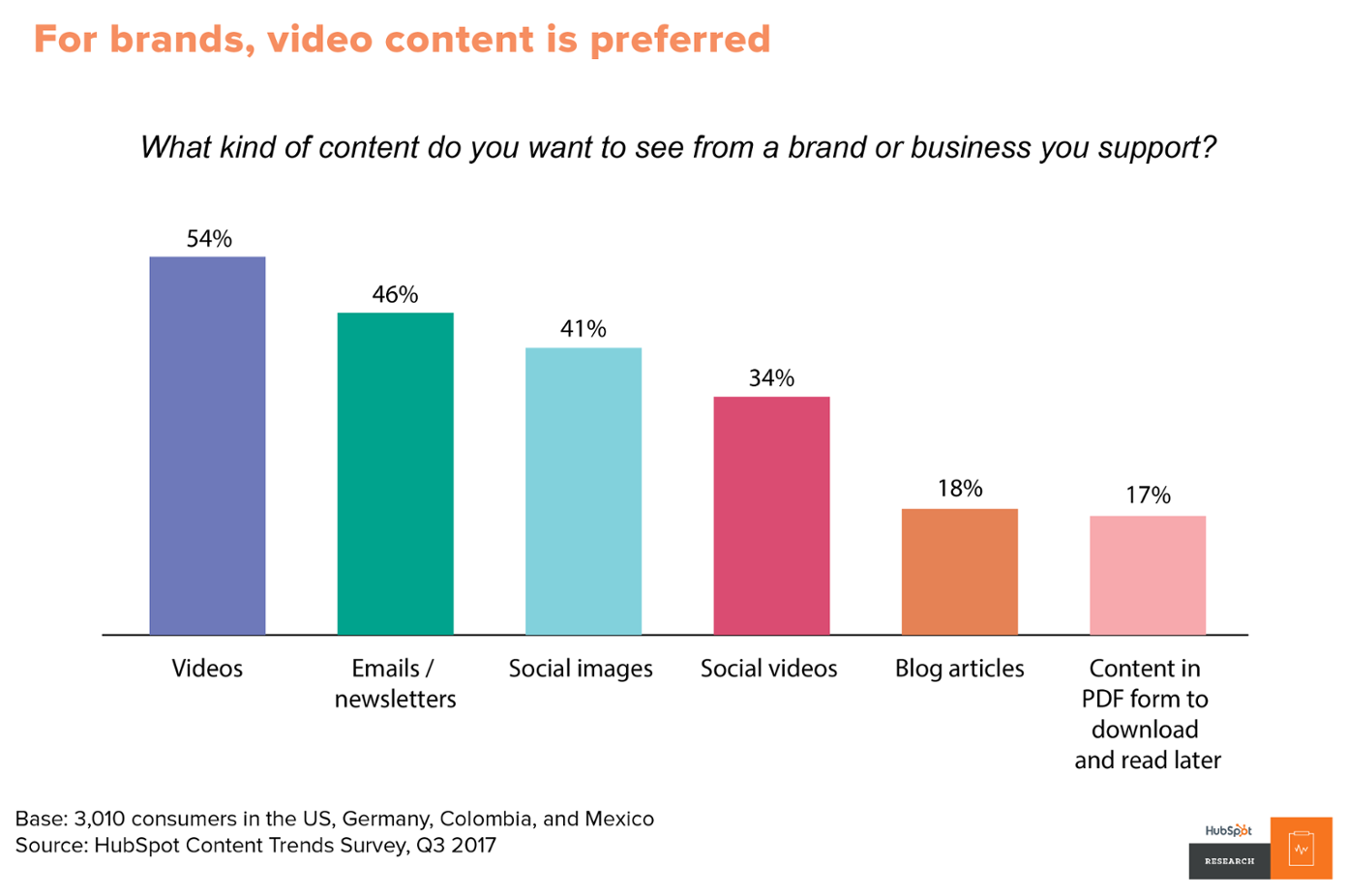
Campaign Monitor found that an email which mentions "video" in the subject line is 20% more likely to be opened.
HubSpot reported that using video on a landing page can increase conversion rates up to 80%.
According to a 2018 survey by Statista, 85% of internet users spend at least part of their online time watching videos. Among younger users, six hours a day watching video content was typical.
What Is A Video Marketing Strategy?
A video marketing strategy is a plan of action that describes how you will research, plan, curate, create and use videos to help you reach your small business marketing goals. It includes the goal setting process, the video marketing tactics, as well as distribution and promotion and how to measure and track your results.
We suggest for your video marketing strategy 2021 and 2022 that you create videos that are simple and easy to digest and publish them on social media and your website and share them with your email list. Also use live video.
How To Create A Video Marketing Strategy In 8 Easy Steps?
This is how you can create your small business video marketing strategy in 8 easy steps:
Step 1. Set your goals:
First, identify the specific goals you want your video marketing strategy to achieve. These goals will help you decide which video stories to tell and how to measure your results.
Here are some examples for video marketing goals:
- Help prospects understand a complex new product
- Share customer success stories that will resonate with other buyers
- Establish your team as influencers in your target market
- Refocus your brand reputation from me-too to trailblazer
- Generate more downloads of your website resources
- Build a deeper connection, rapport and relationship with your audience
- Advertise your product or service
Step 2. Define your target audience:
Once you have clearly identified your goals, you need to make sure you are very clear about who you are trying to reach and target. Before you proceed, make sure you have detailed buyer personas for your ideal customers.
Step 3. Focus on your story:
Now, it's time to figure out what story you want to tell with your marketing videos.
Step 4. Define your budget:
Define your budget since it determines how you will go about producing your marketing video.
Step 5. Choose a type of marketing video:
Next, you need to choose a type of marketing video that you can tell the stories with that support your goals. Keep your creative requirements in mind and identify and solve creative challenges before you decide on a video type and find yourself stuck or locked in having already invested time, money and energy in the wrong thing for your purpose.
There are 12 main types of marketing videos:
- Demo Videos
- Brand Videos
- Event Videos
- Expert Interview Videos
- Educational Videos and How-To Videos
- Explainer Videos
- Animated Videos
- Case Study and Customer Testimonial Videos
- Live Videos
- 360 Degree & Virtual Reality (VR) Videos
- Augmented Reality (AR) Videos
- Personalized Message Videos
Here are 5 examples of brand stories you can tell with the different types of marketing videos:
Example 1: Showcase product or service value in a demo video:
You already know where your business is superior to the competition. You can highlight this differentiation in videos which demonstrate the advantages, benefits and values and compare them to competitor features that are inferior, or showcase a review by an industry expert.
Example 2: Tell customer success stories in case study videos and testimonial videos:
Video can let your potential customers picture themselves using your product. Endorsements can range from a brief testimonial to an influencer review. In a case study, your customer tells the story of how their problem was solved and the benefits they enjoy as a result.
Example 3: Share a tutorial in the form of explainer videos or how-to video:
How-to videos are essential to the buyer's journey. Curious prospects want to know how a product works and whether it might fit their situation. As their purchase intention develops, how-to content can position your brand as the trusted source, sustaining that role all the way to a purchase.
Example 4: Build relationships in live videos and establish an emotional connection with brand videos:
Videos can develop a strong sense of connection to your brand. As the CEO can discuss the company's mission. Your top engineers can discuss where the industry is heading. Familiar faces on your service team can invite customers behind the scenes to learn more about your corporate culture.
Example 5: Emphasize your expertise and sense for community with event videos:
One of the most powerful tools for customer engagement, are event videos that enable your viewers to join you in events.
Step 6. Decide which metrics to track and measure success with:
Now that you have considered all of the variables, you have the perfect overview of your video marketing campaign and can make an informed decision about how you will track and measure the performance and results of your video marketing campaign. Only if you do this correctly, you'll be able to tell the success.
Step 7. Make a promotion plan:
Decide where you will publish your video, how you will distribute it and promote it across your digital marketing channels. Content promotion and distribution is equally important as the creation to see success.
Step 8. Produce your marketing video:
With the video marketing strategy in place, you can now think about creating your actual marketing video. Learn more about how to start a marketing video right below.
How Do I Start A Marketing Video In 7 Simple Steps?
Depending on your budget, you can plan, script and shoot your own videos or you can get professional help from a video marketing agency. They can help you put it all together with a clear video marketing strategy, effective video scripts and professional lighting, sound, editing and special effects.
A digital marketing agency with video marketing services like Dragon Digital Marketing can handle the posting and promotion of your brand stories on social media and will also help with gathering your viewer data, measuring your ROI and metrics and make sure you see a steady improvement in your video campaigns.
Even if the only camera you have is your smartphone, you can shoot and edit a video. As you learn, you can keep it simple or get as fancy as you want, adding special effects and more.
How To Make a Marketing Video For Your Small Business in 7 simple steps:
Step 1. Plan your video and think about the purpose of your marketing video.
Get all stakeholders involved in the process and create a questionnaire or survey to collect and aggregate the answers in one place.
Make sure to consider:
- Video goal
- Video due date
- Video budget
- Creative requirements
- Video timeline
Step 2. Most videos need a script.
Even if you are not going to read if off word for word from a teleprompter, or memoize it word for word, you still need to have some notes about what you want to mention when and how you want to say it. You want to be strategic about your videos because they are part of your small business marketing strategy and to be taken seriously and not underestimated.
When you write your video script, show it to the stakeholders and your direct team and edit and revise it to make sure you don't lose your audience along the way and make sure the beginning of your video is exciting enough to make them stick around till the end.
Step 3. Make yourself familiar with the equipment.
Understand your camera and how to use your cameras in the best way. Understand audio and your microphone and sound and learn about the basics of video lighting.
Learning to shoot video doesn't have to be overwhelming. You likely already have a great and easy to use camera right in your pocket - your cell phone.
Now, it's time to set up your studio and determine your set, frame and compositions. Adjust everything until you are happy.
Step 4. Brief, coach and prepare the people who will appear in your video.
Walk them through the steps. Help them to thrive in front of the camera. It's more authentic if the people are your actual employees, clients, etc. and not paid actors. You want to make the experience for them as pleasant and un-scary as possible.
Step 5. Press record.
Time to go for the shoot and record your marketing video.
Don't obsess about it being perfect. Authenticity is key and you don't have to get it all in one take. As a matter of fact, this may not even be possible for what you have in mind for your video. You can always edit your footage or utsource the video editing to a digital marketing company.
Step 6. Organize your footage and go for the edit.
Edit your video and add music, effects and - if needed - voice overs. Create a few versions and decide which one to go with. Involve your team in the decision and A/B test different versions of your video to make an even better decision.
Step 7. Publish your video and promote it.
Make sure that you optimize it with keywords in the video title (and description), use the right hashtags, fill out the video metadata when exporting, adhere to the SEO best practices and continue to distribute and promote it. Also think about repurposing your marketing video to get the best possible results from your efforts and the biggest bang for your buck.
Video Marketing Conclusion
When your potential customers go online, their preferred form of entertainment and information is increasingly video content. Whether people search for services and products or enjoy social media, to find and engage with your audience in 2021, you need video marketing.
Know your audience, so you can be confident in developing a video marketing strategy based on content they will find compelling. Don't worry about high-end production. Just step in front of the camera and focus on telling your brand story in a way that is emotional, helpful and authentic.
Before long you'll be an experienced video storyteller - with a bigger, more enthusiastic audience of customers!
To learn more about video marketing, watch my video podcast interview about Video Marketing: How to give successful video presentations.
Search Engine Optimization (SEO)
What Is SEO?
Search Engine Optimization (SEO) is the practice of increasing the quality and quantity of traffic to your website through organic search engine results.
Search engines crawl and index pages on the web, and they use links between pages to decide which paths to take to get from page to page.
You can imagine each website as a subway station and a search engine as a subway car that moves between them and stores information.
Your website is a part of a larger system.
SEO includes a variety of different strategies and tactics like optimizing your content on your page, your technical set-up, and building backlinks to extend the reach of your website. This way you can appear at the top of the first search engine result page for the set of keywords you want to rank for.
Download our free SEO Checklist and optimize your website.
Why Do I Need SEO? Why Is SEO Important?
Think about the process that you take when you look for a new vendor or business to work with.
Before you simply pick one out of the phone book, you probably do a little bit of research. You might ask a few friends or call up other business owners you know to hear who they use for the specific service you are seeking.
Based on their recommendations, you might then narrow down your list to a few companies. You might then do some more research online, visit the businesses in person, or look for customer reviews.
Based on all of this criteria, you will then feel confident to be able to pick the best company to work with.
Believe it or not.
This process is very similar to how search engines decide which websites get the top spots for specific search terms.
They take multiple factors into consideration, including website quality, popularity, and user satisfaction. Without the factors listed above, you would have trouble picking a business to work with. And without SEO, Google would have trouble picking a website to rank on the first page.
You need to rank on the first search engine results page to get more visitors to your website, that you can then convert into customers.
There are typically 10 search results per search engine result page. The first page gets most of the clicks, which means it has the highest Click-Through-Rate (CTR). In the picture below you can see that, on average, the search results on the first page (#1-10) get 71.33% of the clicks. Page two and three get only 5.59% of the clicks. On the first page alone, the first 5 results account for 67.60% of all the clicks and the results from 6 to 10 account for only 3.73%. That's why it's so important for you to be on page 1. (Stat source)

While paid advertising, social media, and other online platforms can generate you traffic to your website too, the majority of online traffic is driven by search engines.
Organic search results cover more digital real estate, appear more credible to searchers, and get way more clicks than paid ads.
Of all website visits, only 6% of website visits come from people who have clicked on paid search advertisements, and 47% of visits are organic search visits. Check this stat here.

SEO is also one of the only digital marketing channels that, when set up correctly, can continue to give you regularly incoming traffic over time.
Your organic search traffic can snowball over time but your ad traffic stops the minute you stop paying for ads.
Search engines are getting smarter, but they still need our help. We can help you to optimize your site for search engines, and deliver better information to them so that your content can be properly indexed and displayed in the search results.
Download the complete 42-point simple (but effective) SEO Checklist!
What Are The Benefits Of SEO?
There are even more benefits of SEO and reason why you should invest in SEO. Here are the top 39 benefits of SEO:
- Your competitors are already using SEO to grow
- SEO can give your small businesses an edge on larger companies
- SEO will help you gain market share
- SEO can help you build your brand
- An optimized website earns more traffic
- SEO doesn’t require you to pay for ad space
- SEO does not involve any paid advertising
- SEO receives 90% more clicks than PPC
- SEO integrates all of your online marketing activities
- SEO improves your overall marketing ROI
- SEO helps your target audience find your site
- SEO boosts your trust, credibility and authority
- SEO can help you stay ahead of your competitors
- SEO improves the user experience
- SEO is easy to measure
- SEO gets you noticed by the people who are searching for your products or services on search engines
- SEO pulls-in quality traffic
- SEO traffic is more likely to convert
- SEO increases your sales and gets you leads
- SEO can lower your cost per acquisition
- Top SEO rankings give you 24/7 promotion
- SEO is a long-term strategy
- SEO makes your customers more informed
- SEO can influence buying decisions in your favor
- SEO increases your brand awareness and equity
- SEO gives your more touch points with your customers
- SEO can increase your website referrals
- SEO drives offline sales
- SEO increases the value of your business
- SEO rankings are an intangible asset
- SEO is the new PR strategy
- SEO improves the safety and security of your website
- SEO decreases your advertising costs
- SEO drives your long-term success
- SEO Can multiply your impact
- SEO Leverages social sharing
- SEO Will help people find your website
- SEO makes you ubiquitous
- SEO beats paid traffic
How Do Search Engines Work?
Google follows three basic steps to generate results from web pages:
- Step 1: Crawling
The first step is finding out what pages exist on the web. There isn't a central registry of all web pages, so Google must constantly search for new pages and add them to its list of known pages. This process of discovery is called crawling. Google crawls web pages by following the links between them. - Step 2: Indexing
After a page is discovered, Google tries to understand what the page is about. This process is called indexing. Google analyzes the content of the page, catalogs images and video files embedded on the page, etc. This information is stored in the Google index, a huge database stored in many computers. - Step 3: Serving and Ranking
When a user types a query, Google tries to find the most relevant answer from its index based on many factors. Google tries to determine the highest quality answers, and factor in considerations that will provide the best user experience.
You can learn more about how Google works on the Google blog.
Basic SEO, On-Page SEO, Off-Page SEO, Technical SEO, Local SEO: What Are The Different Kinds Of SEO?
You can differentiate between different kinds of SEO that go hand in hand.
If you don't have the basics set up, search engines can't even find your website. If you don't optimize your pages for keywords and promote your content enough, you won't get enough engagement, shares, and links, even if your site is technicaly optimized. And you can have the best site with the best content but if your technical SEO is messed up, then you’re not going to rank either.
It's important to optmize your small business website all around if you want to rank in Google. Let's dive into the different kinds of SEO.
-
Basic SEO:
Many people think SEO is too hard and not worth the effort. That’s not true. The basics of SEO are actually quite simple. And with 57.8% of all web traffic coming from Google, it’s certainly something worth learning about if you have a website.
The SEO basics are a fundamental mix of SEO tactics. If you think the basics aren’t enough to get you ranked, think again. Most people running websites have a very limited understanding of SEO, so knowing the basics can certainly help you succeed.
It's about getting your wesite on Goolge, ensuring crawl accesibility, making sure your website is mobile-freindly, and signing up for Google My Business, among other things.
We have a free SEO checklist you can download that walk you through how to optimize your website for all kinds of SEO step-by-step. -
On-page SEO:
On-page SEO focuses on all the content on your web pages. It includes keyword research and optimization for promising keywords, as well as creating high-quality content. Other aspects of on-page SEO are having a user-friendly site that’s easy-to-use on all devices.
This makes users engage with your content on your site, and having a great website with relevant and helpful expert content that people love is a ranking signal to Google.
Learn more about on-page SEO techniques on our digital marketing podcast. -
Off-page SEO:
Off-page SEO refers to actions taken outside of your own website to impact your rankings. Optimizing for off-page involves improving the perception of users and search engines of your website. It includes improving your site’s popularity, relevance, trustworthiness, and authority.
This is done by building backlinks from other reputable places on the internet to your website, getting mentioned and quoted, getting engagement on your content, being active on social media, being promoted by influencers, and guest blogging, amongst others tactics.
Learn more about off-page SEO optimization on our digital marketing podcast. -
Technical SEO:
Technical SEO is the process of ensuring that a website meets the technical requirements of modern search engines with the goal of improved organic rankings. Important elements of technical SEO include crawling, indexing, rendering, website architecture, and load speed optimization. It's all about making a website faster, easier to crawl and understandable for search engines, and is basically a part of on-page SEO that gets more technical.
Learn more about how to optimize your website for technical SEO in our free ultimate SEO checklist for small businesses. -
Local SEO:
Local SEO is the practice of optimizing your website for a specific local area. If you have a local business, like a shop, restaurant, or agency, you want your web pages to rank for certain search queries performed by a local audience.
You can do that in part on your own website by e.g. including your business name, address, and phone number on your website to show up on relevant local searches. But there's a lot more you can do like optimizing your Google My Business profile, increasing your exposure on Google Maps, and getting engagement and reviews on Google.
What Role Do Keywords Play In SEO?
In SEO marketing, a keyword is a term or phrase that is searched for and used by more people than synonymous or similar terms or phrases, and indicates an intent that is valuable to you.
Researching and using keywords can give you the maximum amount of exposure, visibility, and awareness and can make your content resonate and perform better. This ultimately leads to more free organic traffic and sales.
Marketing dictionary: What is a keyword?
— Monique Idemudia - Dragon Digital Marketing (@DragonDigitalM1) May 3, 2021
In marketing, a keyword is a term or phrase that is searched for and used by more people than synonymous or similar terms or phrases, and indicates an intent that is valuable to you. pic.twitter.com/hO53lYq5qc
You can optimize each page on your website for certain, relevant keywords to attract visitors to your website when they search for them, and thus allow them to find your products, services, or any information related to your business.
For example, if you offer photo editing software, you want to be the first result a person searching for “photo editing software” or "how to edit photos" sees.
What Are The Different Kinds Of Keywords?
You can differentiate between 3 types of keywords you can target to rank for:
-
Navigational keywords (Visit keywords)
- Used to locate a particular brand or website e.g. searching for “Facebook” just to navigate to "facebook.com" instead of typing in the URL directly
- Very competitive and often times not worth the time or effort
- Have high traffic numbers but will generally not lead to any sales
- Often include signal words like: Address, Contact, Direction, Here, Local, Near me, Nearest, Map of, Reviews, Testimonials, Where is, Where are, Zip code
-
Informational keywords (Know keywords)
- Used to discover about a particular topic e.g. “How to wrap a gift” or “What are the best wireless earbuds”
- Good keywords for most projects because you get the chance to provide customers with information and give them what they're looking for when researching in order to make a buying decision
- Lead to more customers
- Often include signal words like: How to, Compare, Alternative, Find, Improve, Tips, What is, What are
-
Transactional keywords (Buy keywords)
- The searcher wants to complete a commercial action e.g. “Buy jackets online”
- Good keywords for most projects
- Lead to more customers
- Often include signal words like: Bargain, Buy, Remedy, Fast, Quick, Fix, Free shipping, Expensive, Cheap, Reduced, Low price, Inexpensive, Brand Name
- Have a higher Cost-per-click (CPC) because advertisers are willing to spend more money per click on their ads that target keywords which indicate a buying intent
The different keyword types can have different forms:
-
Head term keywords
- Have 1-2 words e.g. “digital marketing”
- Very competitive and often times not worth the time or effort
- Have high traffic numbers but will generally not lead to any sales
-
Long tail keywords
- Have 3 or more phrases e.g. “digital marketing for a small business”
- Good keywords for most projects because more specific and less competitive
- Lead to more customers
How Can I Optimize My Website For Search Engines?
You can optimize your website for search engines by meeting all the SEO needs. Not all SEO needs are the same. Some are prerequisites for others and basic necessities, while others are enhancements.
Here you can see an infographic of the hierarchy of SEO needs.
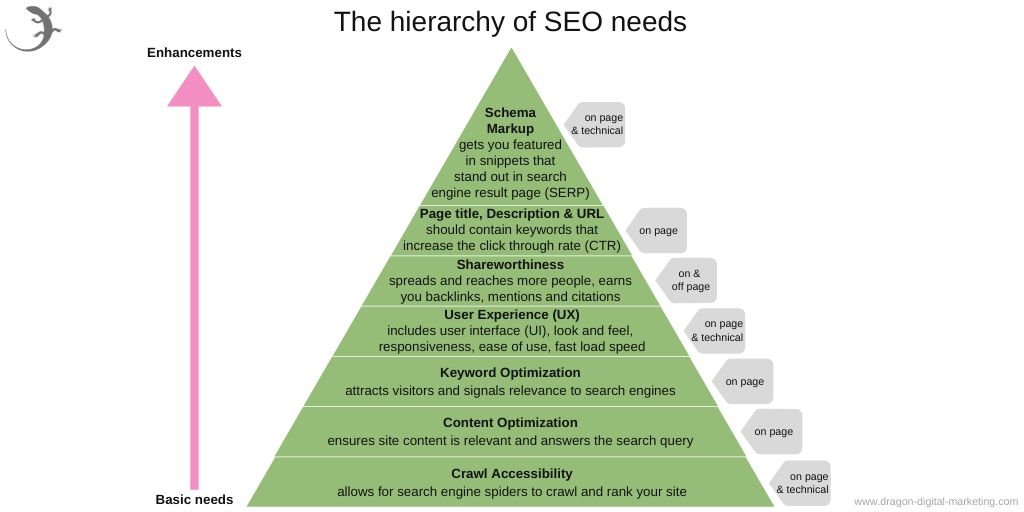
In this podcast episode, I explain the hierarchy of SEO needs.
Listen to the full Dragon Digital Marketing Podcast episode 9.
Another thing you need to consider are the Google ranking factors. Fulfilling these requirements will allow you to rank in Google Search.
Listen to the full Dragon Digital Marketing Podcast episode 7.
Download the complete 42-point simple (but effective) SEO Checklist here.
What Is SEO For YouTube? How Do You Do SEO On YouTube?
The second most popular search engine after Google is YouTube. You can also do YouTube SEO and optimize your YouTube videos so they come up in the video search results on YouTube.
Learn more in this video of our podcast episode #37: YouTube SEO: How to rank your videos and get traffic to generate leads and sales.
What are SEO Tools I can use?
Google Search Console and Google Analytics are free tools by Google which we highly recommend using. They’re a must!
If you have a wordpress site, the Yoast plugin is essential as well.
Ubersuggest is a great SEO tool you definitely need to check out if you haven’t already.
Advanced SEO tools we can recommend are the Moz Pro SEO toolset, Ahrefs, and the Raven SEO tools.
You can find a complete list of SEO tools here.
In addition to that, there are a couple of Google Chrome browser extensions you definitely want to check out when doing SEO because they really help you to hit the ground running. You can find a list of them here.
SEO Conclusion
SEO is a marathon and not a sprint. It is a truly long-term digital marketing tactic and offers huge benefits if done right. With SEO you can get lots of traffic to your website that you don't have to pay per click for.
Don’t worry if you’ve already made some SEO decisions in the past that might not have been the perfect choices. Just commit to getting started today as it can take you 6 months or more to see great results.
Need to troubleshoot your SEO? Learn the 'The Top 4 Reasons You Don't Rank In Google' in our Dragon Digital Marketing podcast episode 8.
Listen to our SEO expert interview with Craig Campbell 'SEO 101 For Small Business Owners' in our Dragon Digital Marketing podcast episode 17.
Search Engine Marketing (SEM)
In the following section, you'll learn all about SEM for small business.
What Is SEM?
Search Engine Marketing (SEM) is the practice of marketing a business in search engines. SEM is often used synonymously with paid search and doing Pay-per-click (PPC) advertising in search engines. Those are the ads that appear above, and sometimes below, the organic search results. SEM includes all marketing efforts that involve search engines and thus also includes search engine optimization (SEO), the practice of making your website rank in search engines organically.
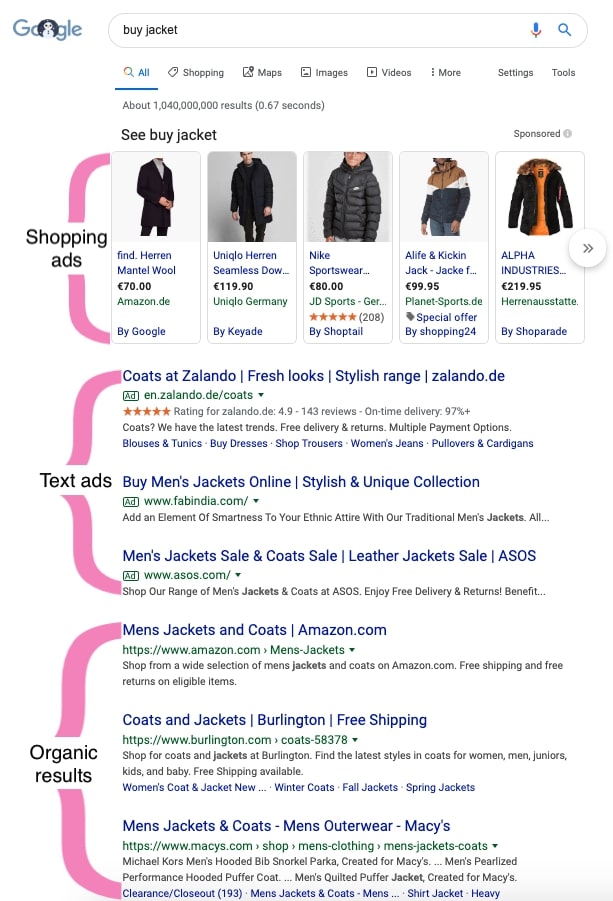
Why Do I Need SEM? Why Is SEM Important?
Search Engine Marketing (SEM) combines the benefits of Search Engine Optimization (SEO) and Pay-Per-Click advertising (PPC). SEO makes you rank higher in search results organically. PPC advertising makes you appear on top of the search results in paid search ads. And SEM includes both. SEO is a component of SEM. The other component of SEM is paid search, also known as PPC. SEO is a powerful way to drive website traffic and get leads in the top of your funnel, while SEM is a great way to drive conversions at the bottom of your funnel. Paid search ads have one huge benefit that no other advertising medium has. This is what makes it so 'expensive'.
Paid search ads allow you to put your message in front of people who, in that precise moment, are looking for content related to your message. This is amazingly powerful. The people that your ads make an impression on have already proven their interest by performing the search and are warm leads.
Paid search also gives you the opportunity to appear on top of the search results instantly for keywords that are so competitive that it takes months to rank for them organically. Combining your search marketing strategy with advertising gives you some results already, while you are patiently waiting for your organic traffic to increase through your SEO efforts.
What Role Do Keywords Play In SEM?
Keywords are the foundation of search engine marketing (SEM). Users search for search terms in search engines. These search terms contain keywords. This search query contains the keywords “pet”, “food”, and “pet food”. Keywords form the basis of search engine marketing.

When doing organic search engine marketing, you wave the keywords you want to rank for into the content on your page and build powerful backlinks to your page.
When doing paid search you bid on the keywords you want to rank for and your ad is shown for search queries containing those keywords, every time you outbid the others.
There is an unlimited amount of space to show organic search results because Google can always add another results page for the pages that move down when your new page outranks them and moves up.
For ads, however, this is not the case. There is a limited amount of ad space and you need to outbid others and have the most relevant content for the keywords on your landing page behind your ad.
What Is The Difference Between SEO and SEM?
The key difference is that search engine marketing (SEM) is a broader strategy which combines paid search and search engine optimization (SEO) tactics.
Paid search is the component of SEM, where you set up an ad, but wouldn’t optimize the ad or the website it links to.
SEO is the component of SEM, where you optimize your website and your content with solid keywords and build links, but you wouldn’t buy any ads.
SEM, the holistic approach, is when you optimize your website for search engines to rank organically, and additionally run ads to give yourself a further boost.
SEO therefore is a component of SEM.
SEO is different because you don't pay Google for traffic and clicks. You earn a free spot in the search results by having the most relevant content for a given keyword search.
SEO is a powerful way to drive evergreen traffic at the top of your funnel, while pay-per-click (PPC) advertisements are a way to drive conversions at the bottom of your funnel.
In this podcast episode, I explain the difference between SEO and SEM, and in addition to that also teach you how all of that is related to PPC advertising and Social Media Marketing.
You can listen to the full podcast episode here.
Conversion Rate Optimization (CRO)
What Is A Conversion?
A conversion is the process of a person completing a desired action which causes them to move from one stage to another stage in the buyer's journey. The stages of a buyer's journey are oftentimes illustrated as a funnel. A marketing funnel or sales funnel illustrates the theoretical customer journey toward the purchase of a product or service and it depicts the drop off from one stage to the next.
This is what a typical sequence of conversions in a buyer's journey can look like:
Strangers convert into website visitors.
Visitors convert into leads.
Leads convert into customers.
Customers convert into brand advocates.
Desired actions – conversions – can come in many shapes and sizes. It really depends on what your goals are.
Examples of conversions are:
- Purchasing your product
- Requesting a quote from you
- Scheduling a consultation with you
- Subscribing to your service
- Signing up for your email newsletter
- Creating an account
- Adding your product to the cart
- Filling out your contact form
What Is Conversion Rate Optimization (CRO)?
Conversion rate optimization is the systematic process of increasing the percentage of your website visitors who take a desired action.
The process involves understanding how your users move through your website, what actions they take, and what stops them from completing your goals.
Conversion rate optimization includes designing and modifying certain elements on your pages in a way that increases the chance that they will convert.
Why Do I Need Conversion Rate Optimization (CRO)? Why Is Conversion Rate Optimization Important?
Most businesses are structured to drive traffic toward their website and then convert those visitors into leads that salespeople can then close.
When this process starts to deliver results, most businesses then seek to generate more and more traffic to get more leads and more customers.
But here’s the kicker.
What if you would focus on getting more from your existing traffic and stop burning all those potential leads? That's where conversion rate optimization comes in. If a visitor bounces off your site and does not convert, chances are for some reason, they’ve had a bad user experience and probably won't come back. That means they’re lost forever.
Imagine how many leads you may have lost to this day?
Don’t worry. We’re here to help you out and show you how to optimize your conversion rate.
Conversion rate optimization helps you to make the most out of your existing website traffic and lower your customer acquisition costs. Conversion rate optimization can increase your revenue per visitor, helps you to acquire more customers, and grow your small business.
There is always room for improvement and if you want to come out on top against most businesses, the best thing you can do is constantly iterate and improve your website, create a better user experience for your users and optimize for conversions.
How Can I Calculate My Conversion Rate?
Now you know what conversion rate optimization is and why you need it and you want to set your goals.
Beware of this common mistake:
A fatal mistake many people make is saying: "This page has converted 50 people this month, so we want 100 next month."
Here’s the thing.
You don't just want 50 more conversions from your page, you want 50 more conversions from your page for every x amount of visitors. This is your conversion rate.
You can calculate your conversion rate by dividing the number of conversions a web page has generated in x amount of time by the number of people who visited that page in the same x amount of time.
We have created this conversion rate optimization calculator tool for you so you can calculate your conversion rate right now and see how you can reach your goals.
Here’s how to calculate your conversion rate.
Conversion rate calculation formulas:
New revenue goal ÷ Average sales price = Number of new customers needed
Number of new customers needed ÷ Close rate % = Number of new leads needed
Number of generated leads ÷ Website traffic × 100 = Conversion rate in %
Try it out with your numbers with our free conversion rate calculator:
How Can I Improve My Conversion Rate?
You need to tweak your pages to get more views, more clicks, more sales, or more of whatever the desired action is that will convert a person to a stage you want them to be in your funnel.
By using words with specific connotations, using colors that we subconsciously associate with something, switching up the fonts or generally designing and modifying the elements of your webpage, you can increase the chances that people will convert.
Think of your website as a net of pages that are interdependent and all connected to each other on different levels. You can imagine your website with all of its pages as a map and determine the path you want a visitor to take. No matter what page a visitor lands on first, that’s where they start their journey towards the goal.
Here’s an example for an ecommerce store:
The goal you want your visitors to
reach is to complete the checkout process and get to your "thank you" page. Your "thank
you" page visitors are visitors who you have converted into your customers.
Let's say the first page a visitor lands on is your home page. Make sure your home page strategically links out to your product pages and that you guide your visitor along your buyers journey towards your goal. Make sure your users have a good user experience while taking the journey. And make sure your other pages also strategically link towards your target path.
This increases the chances of you reaching your conversion and revenue goals and your visitors are less likely to go astray on your website.
In order to guide users through your website effectively, you need your buttons and text links and navigation items to link to pages strategically. You have to place elements on your pages strategically and also optimize your calls to action.
While a visitor is on your site, you need to offer him or her a remarkably positive experience. The better your user experience, the more successful you’ll be.
Bombarding visitors with pop ups and pressuring them with timers or “only 2 items left in stock” messages is not a good experience for users.
Instead you need high quality content and a beautiful intuitive design and a coherent look and feel that supports your message and the story your brand wants to tell.
Here's how you can improve your conversion rate for 4 different pages on your site:
-
Home page
Your homepages is a prime candidate. In often is the first touch point a visitor has with you and thus it influences what first impression a visitor gets.
Your homepage is the best opportunity to retain your visitors and increase the time on site and guide them further into your website.
You can emphasize links to product pages of particularly popular products, place a “free sign up” button in the upper right corner, or have a chatbot in the bottom right corner that is well fed with information on how to respond to certain keywords and help people out by answering their questions.
Other best practices are having your main menu on the top or left hand side and having text links and not images as your main navigation, which goes for any web page. -
Pricing page
Your pricing page can really make or break your visitors’ experience.
You can optimize it by e.g. modifying the pricing intervals (price per year vs. price per month), listing the product features associated with each price in a comprehensive table next to each other so the differences are clear at a glance, and including contact info (especially a phone number) for visitors to contact you for further questions or a price quote. -
Landing page
Landing pages are inherently designed for people to take an action.
An event landing page, for example, can be optimized with a video of last-year's event to encourage visitors to register for this year's.
A landing page for a free resource can be optimized with preview content from that resource to encourage users to download it. -
Blog pages
Your blog is a huge opportunity for CRO. It is a place where you publish qualitative, relevant and helpful content that delights people and showcases your expertise and credibility.
It also allows you to convert readers into leads by offering them more amazing content when they become subscribers to your email list for example.
You can optimize the conversion rate of your blog by placing calls to action thoughtfully throughout your article. Offer people a freebie in exchange for their email address to boost your signup rate.
Marketing automation is the fastest way to engage and grow your audience as a blogger.
Conversion rate optimization is a huge, often untapped opportunity especially for small businesses.
Paid Search Marketing / Pay-Per-Click (PPC) Advertising
What Is PPC?
PPC stands for Pay-Per-Click and is an internet advertising model that’s used to drive traffic to a website. You as the advertiser pay the publisher per click. This means you have to pay when your ad is clicked, and not for your ad being shown.
Typical publishers for PPC ads are search engines like Google and Bing. Paid search marketing with PPC ads and search engine optimization (SEO) are part of search engine marketing (SEM).
What Is Paid Search Marketing?
Paid search marketing refers to marketing activities in search engines that are not organic and thus have to be paid for. It’s PPC advertising in search engines. The most popular examples are Google Ads and Bing Ads. With paid search marketing you pay for your website traffic, instead of earning it organically.
What Is Paid Search On Google (Google Ads)?
Google Ads (formerly Google AdWords) is the single most popular PPC advertising platform in the world. You can create ads that appear on Google Search, Google’s display networks, YouTube, which is owned by Google, and other Google properties.
Google Ads operates on the PPC advertising model, in which you bid on keywords and pay for each click your ad gets.
Why Should I Do Paid Search?
If you have the budget, PPC is the fastest way to get to the top of the search results. If you know your way around the platform, you can set up a PPC campaign in less than an hour and appear in the paid search results immediately.
Paid search is also easy to track and you can reliably measure your success with your search ads. You don’t have to take a gamble like for ads you’ve paid for in advance in other media.
With paid search you can track every ad, keyword, and penny you spend and accurately measure your ROI. This also makes it easier for you to test and tweak your campaigns because you can make decisions based on real data.
You can also pre-schedule your PPC ads and target them to specific locations and times of the day to ensure they’re always the most relevant for the users who see them.
What Are Alternatives To Paid Search Marketing?
If you run a small business, have a tight marketing budget, or simply don’t want to advertise on search engines, you can still achieve a significant level of success with organic marketing.
Organic marketing takes longer until you can see the results from it, therefore your results will also be long-term.
Here’s the deal.
The second you stop spending money on ads, you’ll stop seeing results and all that traffic will go away. All of your advertising expenses have no long lasting effect on your business success.
The results from organic marketing come gradually over time and add up until you get significant amounts of organic traffic to your website that is recurring and doesn’t go away after your campaign is done. You’ll be able to reap results from that for a long time.
What’s the bottom line?
There is a lot to be gained from a savvy organic marketing strategy, whether that be search engine optimisation (SEO) or social media marketing campaigns.
According to Hubspot, 32% of marketers rank outbound marketing practices such as paid advertising as the top waste of time and resources.
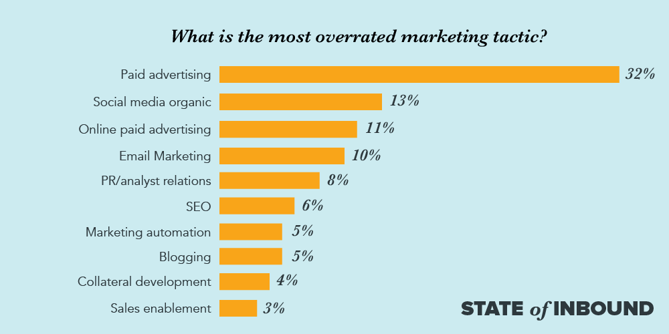
How Much Is Paid Search Marketing? How Much Does Paid Search Cost?
The average cost-per-click (CPC) in Google Ads is $1 to $2 on the search network. The average CPC on the display network is under $1.
The average small business spends between $9,000 and $10,000 a month on paid search ads. That is $100,000 to $120,000 per year. Check out these stats here.
An alternative to paid search is organic search engine optimization.
How Does Paid Search Marketing Work?
Doing paid search marketing through Google Ads is particularly valuable because Google is the most popular search engine. It gets enormous amounts of traffic and therefore delivers the most impressions and clicks to your ads.
Every time a search is initiated, Google digs into its pool of ads and determines which ones to show as part of the search results.
Google chooses based on a combination of factors.
These are the 5 most important factors for paid search on Google:
-
Keyword relevance
This is about your keyword lists, how tight your keyword groups are, and your ad text. Make sure it’s all highly relevant to win the auction. -
Landing page quality
This is about how optimized your landing page is. Make sure your content is relevant and persuasive, and create an enticing call-to-action that’s tailored to specific search queries.
Designing custom landing pages for your ads is a must. You likely won’t be successful and have a positive ROI if you run ads to your homepage or worse, directly to a product page.
Landing pages help increase your conversion rates and lower your cost-per-acquisition. This is because they are focused on one single goal - the conversion. They don’t have other distractions and their content matches the intent of the visitors who clicked on your ad. -
Quality score
This is Google's rating of the quality and relevance of your keywords, landing pages, and ad campaigns. Google rewards advertisers with a higher quality score and gives them cheaper clicks. -
Ad creative
The creative is your ad copy, the headlines and paragraph text, and your images. -
Cost per click (CPC) bid
The higher your bid is, the more likely you are to win the auction and your ad gets shown.
A lot goes into building a winning PPC campaign: from researching and selecting the right keywords, to organizing those keywords into well-organized campaigns and ad groups, to setting up PPC landing pages that are optimized for conversions.
Search engines reward advertisers who can create relevant, intelligently targeted pay-per-click campaigns by charging them less for ad clicks.
If your ads and landing pages are useful and satisfying to users, Google charges you less per click, leading to higher profits for your business. So if you want to start using PPC, it’s important to learn how to do it right.
How Do I Launch A Successful Paid Search Marketing Campaign In 8 Simple Steps?
This is how you can launch a paid search campaign in 8 simple steps:
- Step 1: Define your goals and brainstorm ideas
- Step 2: Use keyword tools to check the search volume, search intent, paid difficulty, demand, and cost
- Step 3: Structure and organize your paid search keywords
- Step 4: Include negative keywords in your paid search advertising campaign
- Step 5: Know your budget and do the math
- Step 6: Research your competition
- Step 7: Write better ad copy and keep on tweaking your ad copy based on the data you get
- Step 8: Create a powerful and relevant call to action
You can also watch the videos below for a visual walkthrough of how to create search campaigns on Google Ads:
How Do PPC Ads Look Like On Different Platforms?
Here are some examples of how PPC ads can look:
-
Google Ads
An example for PPC in SEM is Google Ads. It allows you to pay for the top positions on Google's SERP at a price "per click" of the links you place. -
Facebook and Twitter
Examples for PPC in social media marketing (SMM) are Facebook and Twitter ads.
Facebook will feature videos, image posts, or slideshows and show it to people on their newsfeed.
You can specify the types of people whose newsfeed your ads will appear in. You can define an audience by a variety of characteristics like gender, age, home country, interests, pages they like, etc.
On Twitter you can pay to place a series of posts or profile badges to the news feeds of your specified audience.
You run different kinds of ads for different kinds of goals you want to reach. You can run ads that generate traffic to your website, or to raise brand awareness, or for people to like your page or follow you, or to sell a product or service, or download your app, or just boost engagement. -
LinkedIn
Another example for PPC ads in SMM are sponsored messages on LinkedIn.
On LinkedIn you can send messages directly to specific users based on their industry and background. Your ads appear as an unread message in people’s inboxes then.
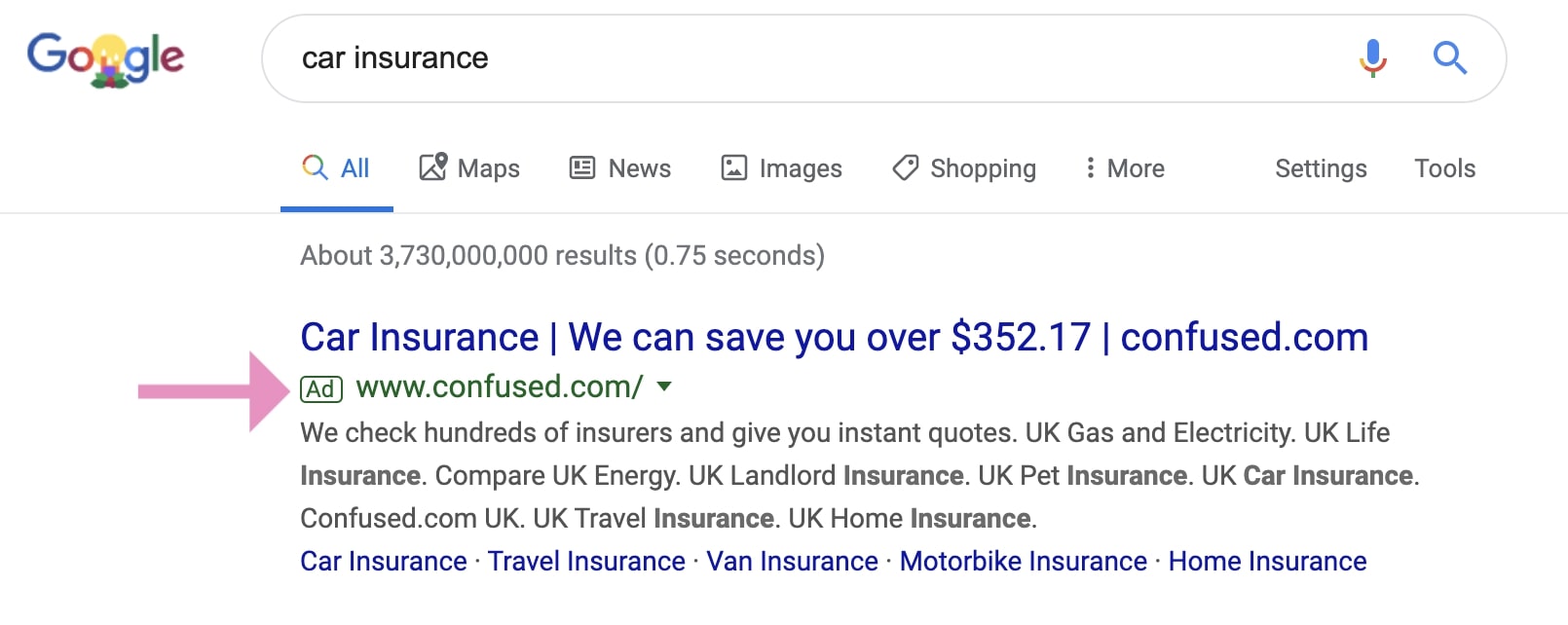
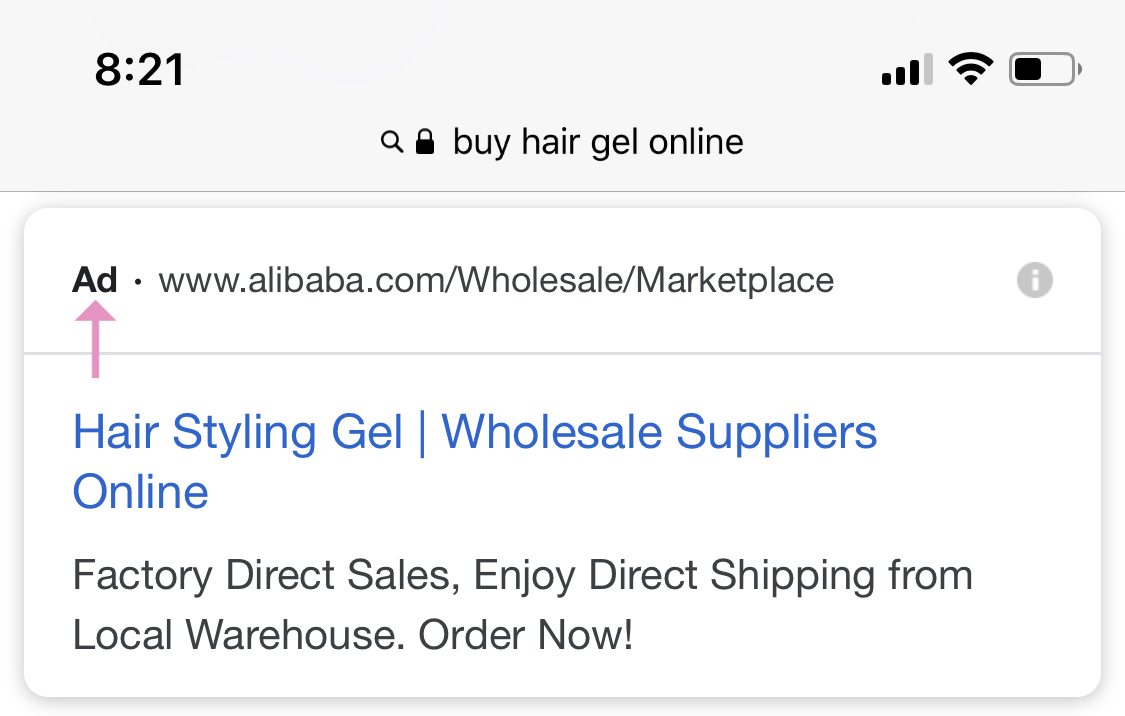
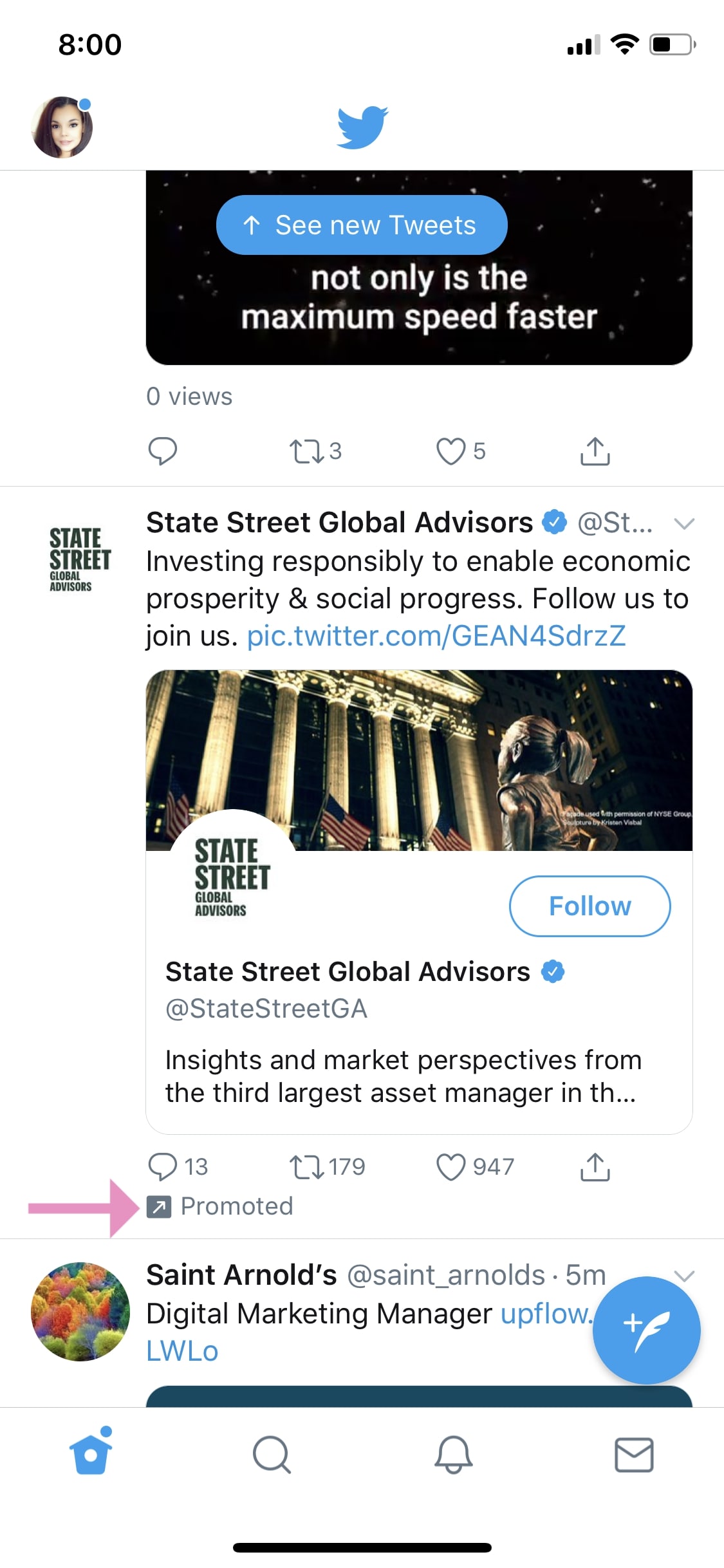
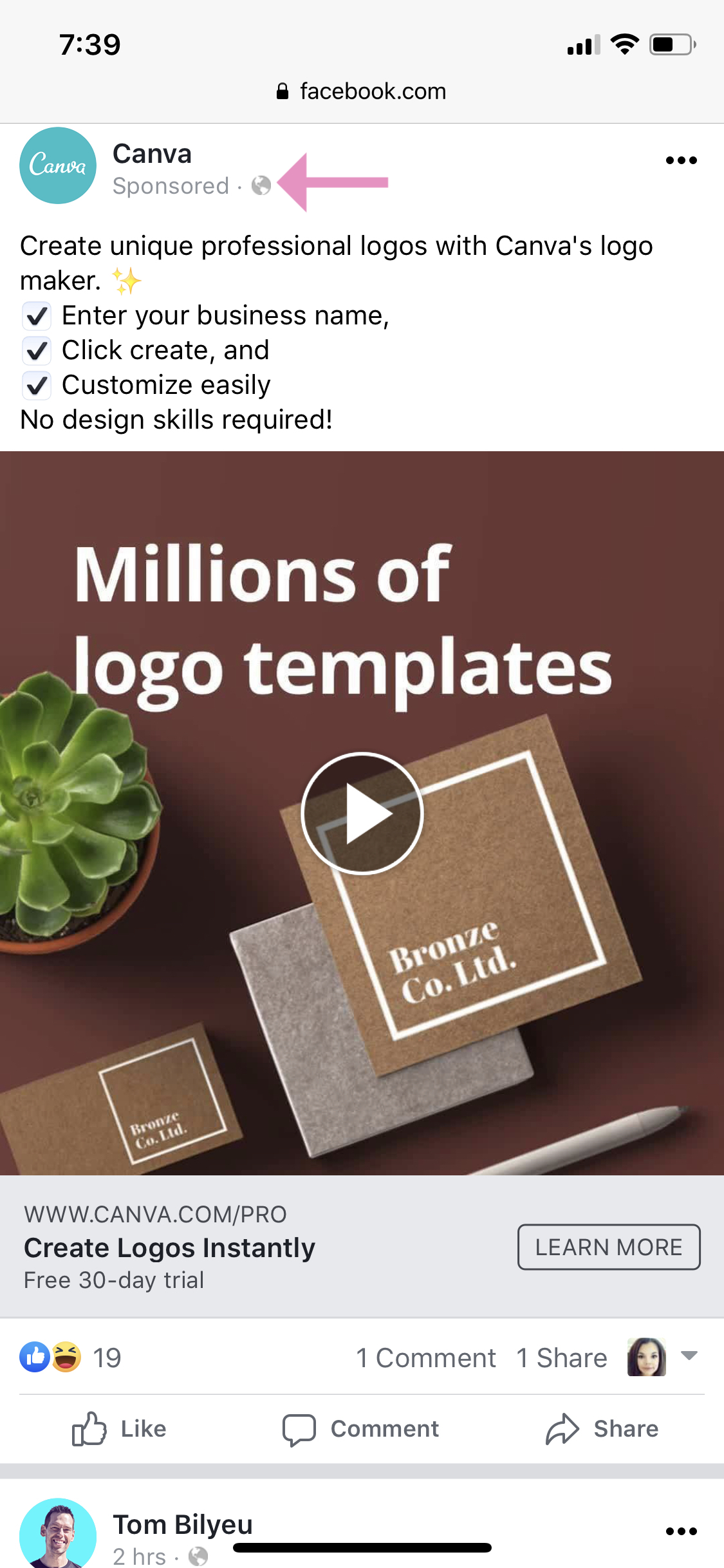

Content Marketing
The following section is a content marketing 101.
What Is Content Marketing?
You may ask yourself: What is content marketing and what is content in marketing?
Here’s the Content Marketing Definition from the Content Marketing Institute:
Content marketing is a strategic marketing approach focused on creating and distributing valuable, relevant and consistent content to attract and retain a clearly-defined audience — and, ultimately, to drive profitable customer action.
It means that content marketing is a long-term marketing strategy that focuses on building a strong relationship with your target audience by giving them high-quality content that is very relevant to them on a consistent basis.
You can use content marketing to attract and develop a specific target audience and get engagement. Content marketing gives you the content you need to make it possible for your target audience to have touch points with you. People buy from people they know, like, and trust. Content marketing enables you to enhance, influence, and change your customer's behaviour toward you in a positive manner.
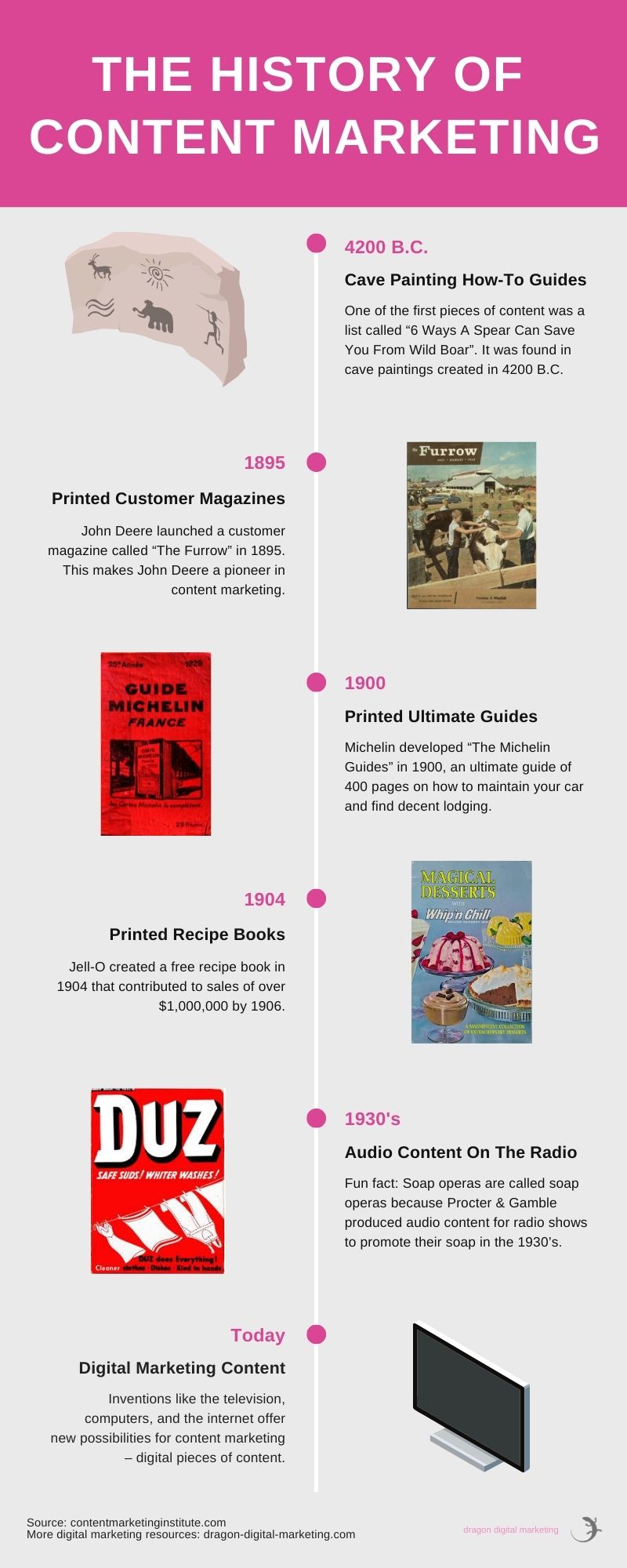
Why Is Content Marketing Important?
Content marketing is important because it answers your audience's questions. A strategic content marketing plan helps you to build trust with your audience, generate more leads, get more conversions, and truly connect with your customers.
It’s an opportunity for you to educate your audience and help people define and understand their challenge better. It allows you to position yourself as the guide that enables them to make an educated buying decision. And on top of that you happen to sell the solution as well.
That’s the approach you want to take in your content marketing strategy to not come off as salesy.
People expect high-quality, consistent content from their favorite brands nowadays. And justifiably so.
Your existing and future customers want to be educated, entertained, guided, and inspired. And if you don’t do that, your competitors are most likely happy to do it and fill in the gap. That’s why content marketing is important.
The foundation of content marketing is putting out high-quality content and storytelling. That’s what you plan and aim to achieve with a content marketing strategy. No wonder, content marketing has been around for way longer than the term itself.
Learn How to create a Content Marketing Strategy for your Small Business in our Dragon Digital Marketing podcast episode 20.
What Are The Benefits Of Content Marketing?
The top 10 benefits of content marketing:
- Increases the visibility of your brand
- Develops lasting relationships with your audience
- Improves your brand awareness and recognition
- Creates trust, credibility, and loyalty
- Helps you to showcase your Expertise, Authority, and Trustworthiness (E-A-T) and benefits your SEO
- Educates your audience about the products and services you offer
- Boosts your conversions
- Shows your audience how your products and services help them master their challenges
- Allows for touch points, engagement, and interaction with your company
- Creates a sense of community around your brand
What Are The Types Of Content Marketing? What Are Content Marketing Examples?
There are many different types of content. The following list will give you some inspiration for when you ask yourself 'What type of content should I create?'.
46 content marketing examples:
- Blog posts
- Social media posts
- Videos
- Podcast episodes
- Infographics
- Emails
- Images and pictures
- Ebooks
- Freebies and lead magnets
- Press releases
- Emails
- Articles
- Case studies
- Infographics
- Ads
- Podcast episodes
- Webinars
- Ebooks
- (Branded) Videos
- Testimonials
- Customer reviews
- Ratings
- Data sheets
- How to guides
- Classes
- Online courses
- Free trials
- Product demos
- Research reports
- Brochures
- Elearnings
- White papers
- Technical journals
- Competitions
- Quizzes
- Widgets
- Virals
- Games
- Celebrity endorsements
- Community forum contributions
- Trend reports
- E-news
- Events
- Product features
- Checklists
- Calculations
Listen to the full Dragon Digital Marketing Podcast episode 4 here and learn how to categorize your content, what types of content are best, and who to serve which content based on criteria that are revealed in the episode. No time to listen to the full episode now? No problem. See summary in the show notes of the podcast episode.
How Is Content Marketing Done?
You create content and you publish it and distribute it.
You can design, write, record, and photograph all types of content you can think of in all types of different media formats like audio, video, text, and images, that help your target audience out in the form of educating, entertaining, convincing, or inspiring them.
Want to know the best part?
You can repurpose your content for different marketing channels which saves you a lot of work and time. You don’t have to reinvent the wheel. You probably already have content right now that you can use and get started with content marketing.
Record yourself reading your blog post out loud and there you got a podcast episode.
Take a screenshot of your tweet and there you got a picture to post on Instagram. It’s as simple as that.
How Can I Get Started With Content Marketing?
You can get started with creating the most impactful pieces of content first and then create a wider variety of content pieces over time.
The top 3 most impactful pieces of content you can create:
-
Blog posts:
Having a blog helps you demonstrate your industry expertise. Your blog posts can also rank on Google and give your more organic search traffic.
There are 600 million (that’s 600,000,000 😱) blogs out there worldwide. In the United States there are 31 million active blogs. Check out the stats here. You get what I’m trying to say?
You got to make your blog really special and it can’t be just another average, mediocre blog. Make sure to update your blog frequently, post something every month, and make sure you stay active in the comment section underneath your posts, engage with your audience, and do your research prior to writing really well.
Also be sure to optimize your blog posts for search engines and wave your keywords into the important places. A blog ultimately gives you many marketing opportunities you don’t have if you don’t have a blog. -
Ebooks and white papers:
Long form content like ebooks and white papers help to further educate your website visitors. This is also something that you can use to delight visitors that have already converted to leads and are in the middle of the funnel.
It also allows you to collect contact info in exchange for the download and thus generate more leads. -
Infographics:
A picture tells more than a thousand words.
Sometimes people just want to see something instead of read. Infographics are a way to neatly display and arrange information and show the relations, so people can understand the bigger picture and get an impression at a glance. Infographics really help people to visualize a concept you want to help them learn.
And there is another amazing thing about infographics. They get shared a lot more than any other type of content. Infographics tend to attract more backlinks to your site over time. They can thus improve your search rankings and get you more referral website traffic as well.
You might be wondering: I'm not a graphic designer!
Here's a solution.
Canva is a free graphic design tool that really makes designing all kinds of graphics super easy. The tools has a drag and drop editor and comes with tons of free templates you just have to modify a bit and there you have your own graphics.
What Types Of Digital Content Should I Create?
You should create content that your audience wants and needs.
Your business should be about bringing value to your customers. It’s all about them and not about yourself. Your content should help them meet their goals and overcome their challenges.
This is why you should create content for your audience in every stage of the marketing funnel.
Here’s a short breakdown of the types of content we think are best for the different stages of the marketing funnel:
- Awareness and interest stage
- Blog posts:
Increases your organic traffic combined with SEO - Infographics:
People like to share it which helps more people find you on social media - Videos:
Helps you get found by new audiences e.g. through YouTube, great to convey information visually, people like to share videos - Consideration and intent stage
- Ebooks:
Generates you leads, people are likely to give you their email in exchange for a free ebook, more in depth and comprehensive than a blog post or infographic - Research reports:
Generates you leads, increases awareness for you in your industry, often picked up by the media or press - Webinars:
Like a video but interactive and more comprehensive, we recommend doing live webinars when you can - Evaluation and purchase stage
- Case studies:
A case study is interesting for people who are ready to make a buying decision and still evaluating, use this tool to positively influence their decision - Testimonials and customer reviews:
Social proof is a strongly influences decision making, you can put videos on your website or written testimonials, a more effortless way would e.g. be including photos of people wearing or sing your product pulled from a branded hashtag where people can contribute
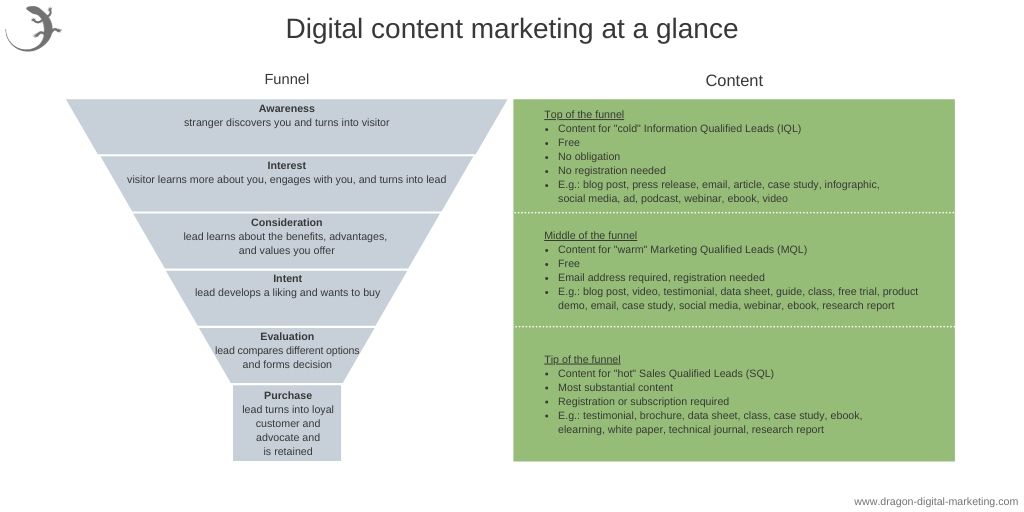
Creating a buyer persona is incredibly helpful for this. Here’s a list of things to consider when creating your buyer persona:
- Name
- Age
- Level of education
- Social networks
- Industry
- Organization size
- Preferred method of communication
- Tools they use
- How they measured success
- How they get information
- Business objectives (goals)
- Business issues (challenges)
- Tasks and responsibilities
- ... and many more
Download our comprehensive buyer persona template and make your marketing stronger. Learn everything you need to know about buyer personas in our ultimate buyer persona guide.
Content Marketing Conclusion
Six things you need to pay attention to when doing content marketing:
- Only publish high-quality content. Be a thought leader and risks and do something new and different. There is enough mediocre content out there.
- Make sure that the topic is relevant and in demand before you go ahead and create a piece of content on it. You can see what's trending on Google Trends or ask your audience first. You want to avoid spending hours on a piece of content that is a masterpiece, but no one cares for it.
- Think about how to get traffic to your content before you publish it. This should be covered in your content marketing strategy. Set up an email marketing campaign to promote your new pieces of content, and send out an email blast to your subscribers who want your news. You can also share your new content on social media, and rank it in Google to get organic search traffic as well through SEO. Promoting your content with paid ads is another option. Nothing comes from nothing. You have to work for the attention. This is marketing.
- Ensure that your content is optimized for your readers. It should be easy to understand, use simple language, trigger emotions, and get straight to the point. People have short attention spans and you're not the only one who competes for your audience's attention.
- Consistently create new content to not be forgotten. You want to be present and on top of people's minds.
- Content writing is not the same as copywriting. Learn more about the difference in the Dragon Digital Marketing Podcast episode #18: Content Writing and Copywriting Tips for Small Business Owners.
Content marketing focuses on long-term results. The initial payoff tends to be low, and in the long-term you’ll be able to see sustainable growth and get more website visitors, leads, and customers. When you create exceptionally great content, you can be sure to see a nice payoff.
Marketing Analytics
What Is Marketing Analytics?
Marketing analytics is the practice of measuring, managing, examining, and analyzing the performance of digital marketing channels. It translates customer behavior metrics into actionable business marketing analytics data. It determines the ROI of your digital marketing efforts and identifies opportunities for improvement.
You might be wondering:
Marketing analytics and marketing metrics. What’s the difference?
Marketing metrics are the marketing analytics data points. Marketing analytics tools then put all that marketing analytics data in the context of your brand and market. This means marketing analytics tells you the complete story of how your marketing efforts drive revenue.
Why Is Marketing Analytics Important?
Measuring the effectiveness of digital marketing is one of the greatest challenges that businesses face today.
Marketing analytics allow you to monitor campaigns and their respective outcomes and enable you to invest your marketing budget as effectively as possible.
This knowledge is powerful.
If something costs more than it returns, it's not a good long-term business strategy. And the tools for marketing analytics tell you for which of your digital marketing efforts that is the case, so you can adapt and tweak.
Marketing analytics allow you to make data-driven decisions based on marketing analytics data.
Measuring and monitoring your campaigns with software for marketing analytics is the only way to prove that your digital marketing campaigns are profitable.
With marketing analytics you can answer questions like these:
- How are my digital marketing initiatives performing today?
- How do my digital marketing efforts perform in the long run?
- What can I do to improve?
- How do my digital marketing activities compare with my competitors’ digital marketing activities?
- Where are my competitors spending their time and money on?
- Are my competitors using channels that I am not using?
- What should I do next?
- Are my marketing resources properly allocated?
- Am I devoting my time and budget to the right digital marketing channels?
- How can I prioritize my investments for next year?
Here are 13 benefits of marketing analytics:
- With marketing analytics you won't support or finance gut feelings or trending marketing techniques without numbers behind them
- Marketing analytics help you to maximize the effectiveness of your marketing efforts in all of the digital marketing channels that you and your audience interact with each other
- Marketing analytics help you to optimize your return on investment (ROI) and to find new revenue opportunities
- Marketing analytics can offer profound insights into customer preferences and trends
- Marketing analytics help you understand big picture marketing trends
- Marketing analytics help you determine which of your digital marketing tactics work and why
- Marketing analytics can monitor digital marketing trends over time
- Marketing analytics help you to thoroughly understand the ROI of each of your digital marketing strategies
- Marketing analytics tools forecast your future results
- Marketing analytics identifies channel deficiencies
- Marketing analytics help you to adjust your digital marketing strategy and tactics as needed
- Marketing analytics data helps you to optimize your processes
- With marketing analytics you gain valuable customer insight
How And Where Do I Start With Marketing Analytics?
60 - 73% of all business data goes unused for analytics. And that's despite the fact that more companies are talking about big data, using technology to capture more data, and acknowledging the value of this information.
Having Google Analytics implemented, as well as a CRM for your small business are necessary first steps.
Besides having the right software for marketing analytics and tracking your marketing metrics, you also need to understand them, know how to interpret them, and how to act on them.
There is no real value in the information itself. What makes marketing analytics so valuable are the implications.
In other words: Marketing analytics is unless you act on it. It’s a constant process of testing and learning. Now, let’s have a look at the metrics and what they mean.
Website metrics you can track with marketing analytics:
- Visitors
- Page views
- Sessions
- Traffic / Visits
- Traffic by channel
- Traffic by device
- Ratio of new traffic to returning traffic
- Time on page / Time on site
- Interactions per visit
- Bounce rate
- Metrics for lead magnets
- Call To Action (CTA) Click Through Rate (CTR)
- Submissions
- Conversion rate
- Free trial conversion rate
- Pop-up conversions
- Ratio of generated leads to Marketing Qualified Leads (MQL)
- Leads to close ratio
Email marketing metrics you can track with marketing analytics:
- Open rate
- Opens by device
- Click Through Rate (CTR)
- Bounce rate
- Unsubscribe rate
- Engagement rate
- Follows / Subscribes
- Shares
Ecommerce metric you can track with marketing analytics:
- Shopping cart abandonment rate
Marketing analytics really connect all of your business activities.
You can use marketing analytics to structure your business goals into outcomes based on 3 broad categories:
- Relationship between different marketing channels:
Let’s take your blog, email, and social media marketing as three example channels here. Analytics allow you to see how many people got to your blog, from a social media platform, downloaded a guide, and then received a follow-up email which then lead to a purchase. Maybe that email generates more conversions than the actual blog posts. - People-centric data on the buyer's journey:
You can see which source has brought a person to your website. Is your Twitter or Facebook the better performing channel? Or is it Google that directs the most people to your site? With analytics you get insights into the entire buyer’s journey people go through. - Attribution modeling:
This helps you to attribute revenue to specific marketing efforts. Not only can you see which page on your site generates the highest revenue, but you can attribute specific marketing activities to sales revenue. A customer relationship management (CRM) system can give you those analytics.
As you can see, there is a data-driven side to digital marketing that is all about monitoring numbers and data in tables, checking reports, and implementing the things you can take away from it.
Make sure to take advantage of analytics. It would be a shame not to leverage this possibility, since this is a huge advantage you don’t have with traditional marketing.
Affiliate Marketing
What Is Affiliate Marketing?
Affiliate marketing is the process of generating sales for a company by referring customers to them, for which you get a commission based on your performance.
As an affiliate you simply search for products and services you enjoy and seek out if the company has an affiliate program you can join to get rewarded for the sales you generate.
Companies use affiliate marketing as part of their digital marketing strategy because it is an additional channel through which they can grow their business and reach more people, get more brand awareness and drive more sales.
As an alternative to starting your own affiliate program as a small business, you can also sign up in affiliate networks. Affiliate networks are middle men that have a platform you can use to publish your offers and connect with affiliates who get you more sales, without you having to worry about administration as if you run your own program and platform.
Affiliate marketing is the oldest form of marketing and existed way before the digital marketing age.
The internet and its influencers have brought new life to this marketing strategy. Many well-known companies e.g. Amazon have affiliate programs that pay out millions of dollars per month to websites that sell their products.
Word of mouth is a very powerful tool and can make affiliate marketing a very lucrative endeavor.
How Does Affiliate Marketing Work?
Five steps you need to take to be an affiliate marketer:
- Find an affiliate program to join
- Do your research and choose offers to promote
- Get your unique affiliate link for each offer
- Share your affiliate links with your audience on your blog, website and on social media
- Collect a commission for everytime someone uses your links to buy
The process works because your unique affiliate links can be tracked. The tracking allows for you to get the commission you deserve for all your referrals and ensures that your referrals can actually be assigned and attributed to you.
Affiliate marketing is a form of performance-based marketing. This means you only get paid when you generate sales, in contrast to getting paid for the time you put in like it is in most jobs.
The commission rates vary dramatically, depending on the company, the offer, the network and the program conditions. It can be anywhere from about 1% up to about 80%.
You will typically earn a smaller commission for referrals to products and services that have a mass appeal and make it easier for you to find a large number of potential customers, and a higher commission for referring products and services that are very niche which makes it harder for you to find customers.
There are high-paying and low-volume affiliate programs that are more niche and there are low-paying and high-volume affiliate programs that have a mass appeal. You can choose what works for you.
Learn more about 7 common affiliate marketing beginner mistakes you must avoid at all costs.
Affiliate marketing channels include:
- Hosting video ads through the YouTube Partner Program
- Sharing affiliate links


Why Be An Affiliate Marketer?
The beauty of affiliate marketing is that you don't have to invest the time and effort to create your own product or service to sell.
Affiliate marketing offers a number of benefits to you as an affiliate.
You handle the marketing part and educate customers, and don't have to worry about all the other responsibilities like controlling, planning, purchasing, organizing, staffing, directing, leading, production, shipping, research and development or customer service. Being an affiliate marketer and selling someone else's product or service and getting commission for that takes a lot of weight off your shoulders.
Affiliate marketing is also low risk. It is free to join most affiliate programs. This means that you can get started and earn money with a relatively small upfront investment like getting your own website.
Affiliate marketing also doesn't require you to go into an office and instead you can work from home or anywhere you want. This is perfect in the present time.
Affiliate marketing can serve you as an additional stream. Over time it can even provide you with a passive income. Once you have a whole bunch of great informational content and can be seen as the wikipedia of your niche, you can set up a system that brings new customers to you on a regular basis, without you having to invest any more time and effort.
Affiliate marketing is scalable too. It doesn't require you to work more to earn more and you can always introduce new products to your audience while your existing ones continue to generate you revenue in the background.
If you don't have a product and want to make money and that's your only motivation, affiliate marketing is not for you because you may not be able to put up the work, time, effort and patience required to make it work for you, or attract a large audience of loyal people which requires you to be genuine and trustworthy.
Affiliate marketing is built on trust. It works best if you recommend products and services you have personally used and like to help the people in your audience out and provide them with more value. If you have a passion and want to be seen as a luminary in your niche and build an audience you want to ethically influence and be their useful, helpful and trustworthy resource with the most expertise, affiliate marketing is for you.
How Do Affiliate Marketers Get Paid?
Depending on the affiliate program and your contribution to the seller's sales as an affiliate, you will get paid based on different metrics.
These are the 3 main ways you get paid as an affiliate marketer:
1. Pay per sale
This is the standard way you get paid as an affiliate. The merchant pays you a
percentage of the sale price the consumer purchases as a result of your marketing
efforts.
2. Pay per lead
This system may apply when the goal of the company is to have affiliates generate
leads for them instead of sales.
A new business may not have a product ready and wants to generate brand awareness first, build hype or get a larger following. So the desired action they want their website visitors to take is different.
It could also be that they sell a complicated or very expensive product that requires a sales team to sell and a product demo presentation first, so the company simply asks you for signups.
Whatever the case is, you as an affiliate have to drive traffic and get the visitors to complete the desired action to get paid.
Some more examples of desired action can be filling out a contact form, signing up for a trial or product demo, subscribing to a newsletter or downloading something.
3. Pay per click
This system focuses on getting you as the affiliate to
redirect people to the
merchant's website. This means you have to get people to click your affiliate link so
the merchant
gets more website traffic.
Event Marketing
Think back to the last event you attended. Events can be very different and serve different purposes and marketing goals. Let's shed light on the world of event marketing.
- Discover how you can use events in your small business marketing strategy to build brand awareness and increase engagement.
- Find out what essential features and key elements your marketing events and campaigns should have.
- Explore the different types of events and various roles your company can have at an event.
- Learn how to prepare for your small business event to ensure successful results.
Event Marketing Definition: What Is Event Marketing? What Do You Mean By Event Marketing?
Event marketing is the practice of promoting a product, service, organization or brand through in-person or virtual interactions between people in real time as a live experience. It includes the event planning, organization and execution process.
There are many different types of events and your small business can take part as a host, participant, exhibitor, public speaker or sponsor. How you participate in an event will be determined by what caters to address your marketing goals in the best way.
Event marketing is one of the best ways to reach the following marketing goals:
- Build brand awareness
- Build stronger relationships with prospects and customers
- Increase customer engagement
- Generate leads
- Educate prospects and customers on your company 's offerings
- Upsell customers
Listen to the full episode #27: Event Marketing for Online Events.
Why Is Event Marketing Important? Why Should I Include Marketing Events In My Digital Marketing Plan?
According to the Event Marketing 2020 Benchmarks and Trends Report by Bizzabo, a vast majority of marketers believe that event marketing is the single-most effective marketing channel for achieving business goals.
An event marketing strategy can help your small business to stand out in a crowded marketplace. By combining event marketing with your digital campaigns, you can create more meaningful and longer lasting customer relationships. Events offer a unique chance to interact with your customers on a more personal level. Whether you're in B2B or B2C - everybody is in P2P, People 2 People - and having a direct interaction is invaluable to fostering deep and prosperous relationships.
The bottom line:
Events, if done right, can be one of your most impactful marketing channels and is essential for B2B and B2C businesses.
What Is Different About Event Marketing?
At its core, marketing is communication. It is the ability to clearly convey the right message to the right people at the right time.
Live events give you the opportunity to connect directly with your target audience and stakeholders and share a message while at the same time creating memories of a great social experience. It's no wonder that event marketing continues to grow as one of the most important marketing strategies because people seek out social interactions and nothing can stop that. And after the pandemic, in-person events are expected to reach a new all time high.
Bizzabo's 2020 findings:
- 95% of respondents believe in-person events can have a major impact on achieving business goals.
- 85% of respondents in leadership roles have identified in-person events as critical for their company's success.
- 20% more marketers from 2019 to 2020 believe in-person events are the most important channel for achieving business goals.
How Does Event Marketing Work?
Event marketing works because humans are social beings and crave to interact, engage and network with like minded others on public and social occasions. If you give people a structure in the form of a themed event with a purpose, people are happy to attend and exchange and connect and build deep, long-lasting relationships. When you connect that with achieving your small business' digital marketing goals, it becomes an insanely powerful thing.
What Are The 6 Essential Features Of Event Marketing?
Six essentials of event marketing:
- Have a clear and measurable event marketing goal and ensure that everyone involved in the event knows about and works towards it accordingly.
- Put a strong focus on your event promotion (ideally start your promo campaigns 4-8 weeks before the event) and the follow-ups.
- Convey a clear message on what's in it for the attendees.
- Consider giving away free gifts and choose effective giveaways with a meaning.
- Use the event to show off and demonstrate your products and services.
- Evaluate each event, do reporting and leverage marketing analytics and measure our event success to get learnings and implications for your next event.
What Is The Event Marketing Mix?
The marketing mix is commonly described as the 4 P 's: Product, Place, Price, and Promotion. It can be applied to all marketing efforts.
In recent years the marketing mix has been extended to 12 P's:
- Product
- Place
- Price
- Promotion
- People
- Physical Evidence
- Process
- Proof
- Portfolio
- Prestige
- Productivity and Performance
- Packaged (Bundled Products)
When creating an event, using these points helps you develop an event that draws the right people in and gets your message across in the best way possible.
How Effective Is Event Marketing?
Here are some event marketing statistics:
- 31% of marketers believe that event marketing is the single-most effective marketing channel. (Endless Events, 2018)
- 67% believe events are their most effective content tool.
- 79% of US marketers generate sales using event marketing. (Statista, 2018)
How Do You Attract Attendees To An Event? 5 Simple Ways
Five ways to attract attendees to your marketing event:
- Social media marketing / social event marketing:
Spread the word on social media and teaser and promote your upcoming event as well as share content from your past events, especially video content on YouTube works well. - Promo on virtual ticket platforms and webcasts:
People on those platforms like events and are looking for new events that interest them, so you better leverage this audience. - Email marketing:
Send out personalized emails to promote your event and follow up. - Influencer marketing:
Collaborate with influencers and get some help to spread the word about your event. - Word of mouth marketing:
Encourage attendees to share, post, snap and thee best reason to do so is to provide an amazing, remarkable and memorable experience.
Types Of Events: What Kind Of Marketing Events Are There? What Types Of Event Marketing Can I Do?
21 event marketing examples: Here are 21 types of marketing events you can host, sponsor, or speak at as a small business owner.
- In-Person Events
- Virtual Events
- Seminars and Webinars
- Live Streaming Events
- Trade Shows and Expositions
- Conferences
- Meetups
- Internal Company Meetings and Periodic Business Gatherings
- Appreciation Events
- Thought Leadership and Networking Events
- Ceremonies and Galas
- Product Launches
- VIP Events
- Job Fairs and Recruiting Events
- Team Building Event
- Field Marketing and Activations
- Online Marketing Events
- Pop-Up Shops
- Launch Parties and Celebrations
- Workshops
- Breakfasts, Lunches, Brunches and Dinners
Event Marketing Conclusion
Event marketing efforts are about planning, organizing, promoting, executing and participating.
There are many different types of events. Event marketing is special because there 's multiple ways your small business can benefit from this effective digital marketing channel.
You can take part in events as a host, participant, exhibitor, public speaker or sponsor. How you participate in an event will be determined by what caters to address your marketing goals in the best way.
Event marketing serves a number of different digital marketing goals like generating brand awareness, building relationships, increasing engagement, generating less and sales, prospecting, upselling and educating your audience.
Mobile Marketing
Mobile marketing targets smartphone users with an internet connection.
Over 80% of internet users own a smartphone. It’s actually more people who access the internet from their phone than using a desktop computer or laptop.
This also means that it's essential to make your ads, web pages, images, etc. responsive. A responsive design allows a piece of content to be displayed on any device, whether it’s a phone, tablet, or desktop computer, and automatically adjust its dimensions.
People who engage with you on a mobile device need to have the same positive user experience as they would on desktop.
Mobile devices are a huge part of our lives which makes it super important for marketers to understand how to effectively communicate on them. It is a unique and extremely personal channel.
Our phones are in our pockets all day, we sleep next to them in our beds and we check them constantly. This makes marketing on mobile devices incredibly important but also very nuanced.
There are many ways to market on mobile devices:
- SMS/MMS text messaging
- Push notifications
- App-based marketing
- In-game marketing
- Location based marking
- Mobile search ads
- QR codes
- Mobile images
- Responsive websites
Native Advertising
Native ads are ads that don’t really look like ads.
Native ads in social media for example, match the look and feel of the regular posts on the platform. They also match the function of the media format in which they appear.
On Twitter that means that it's a short message that is news or otherwise useful to the audience. On Instagram that means having a photo or video that looks like a shareworthy moment of someone’s life. Facebook on the other hand is about staying connected to friends and family. You get the idea.
The reason that there are so many examples for social media is that native ads are mostly found in social media feeds. However they can also often be seen in the “recommended” content section of a website. The sponsored posts from BuzzFeed are a good example for that.
Native advertising is primarily content-led and featured alongside the non-paid content.
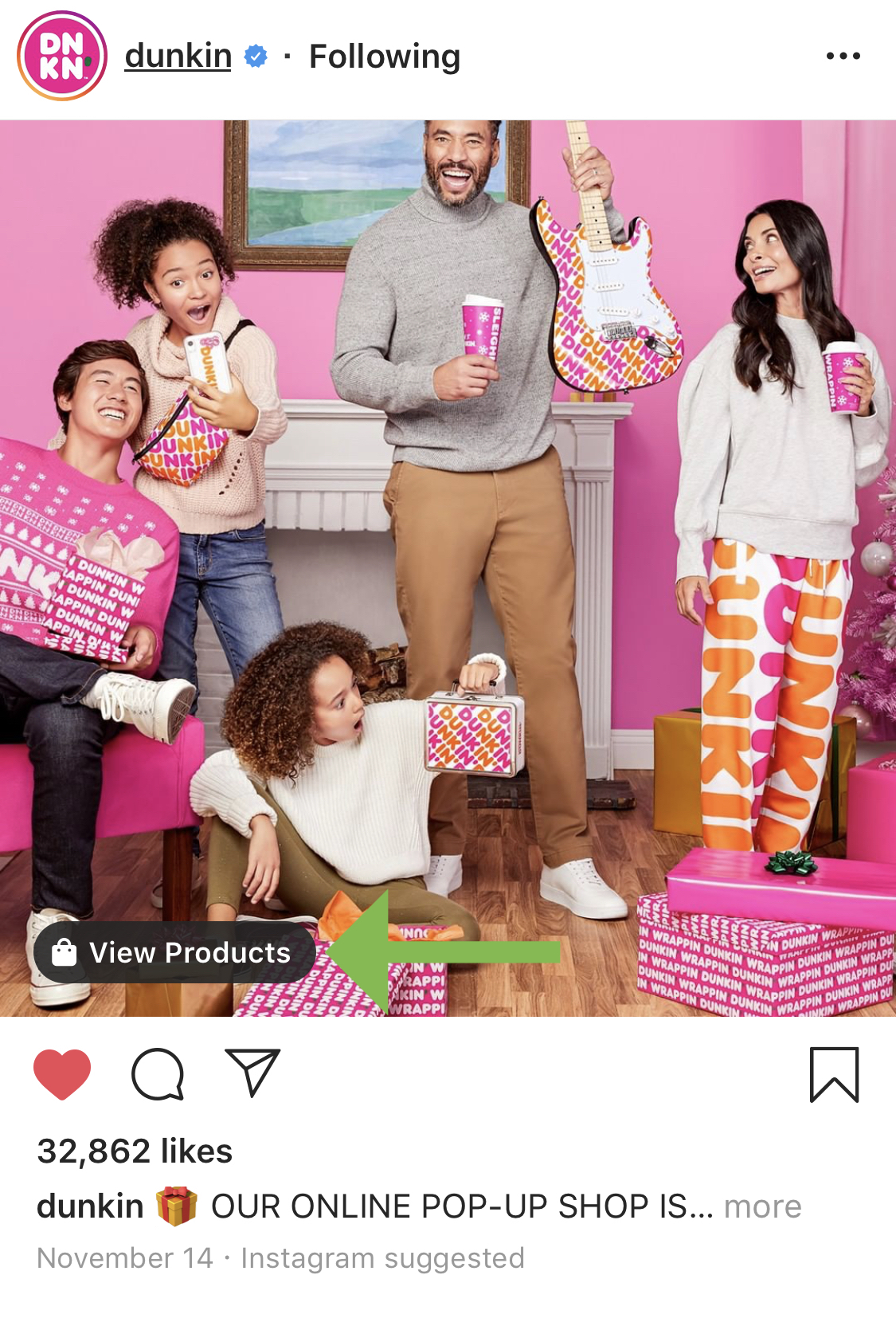
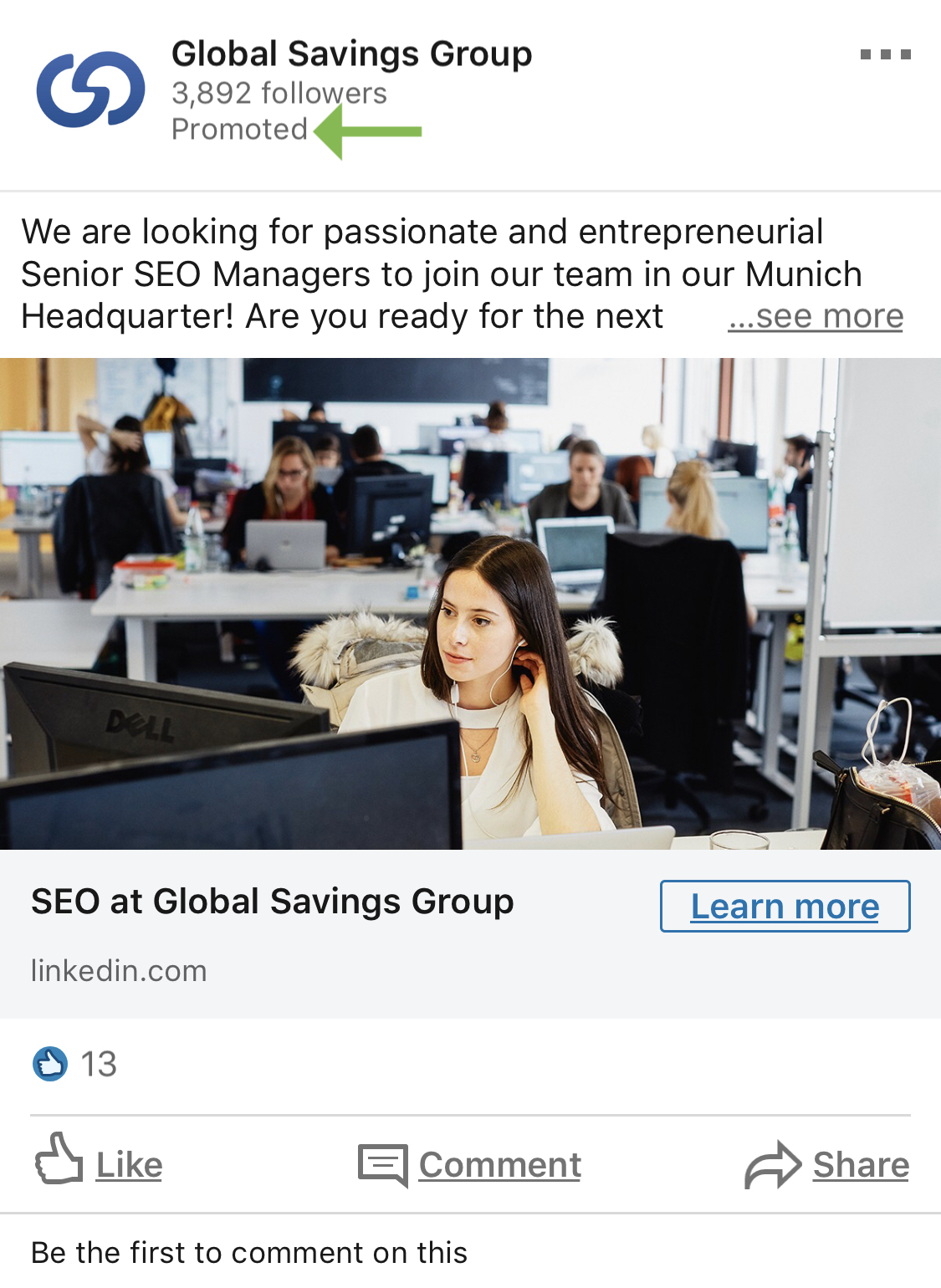
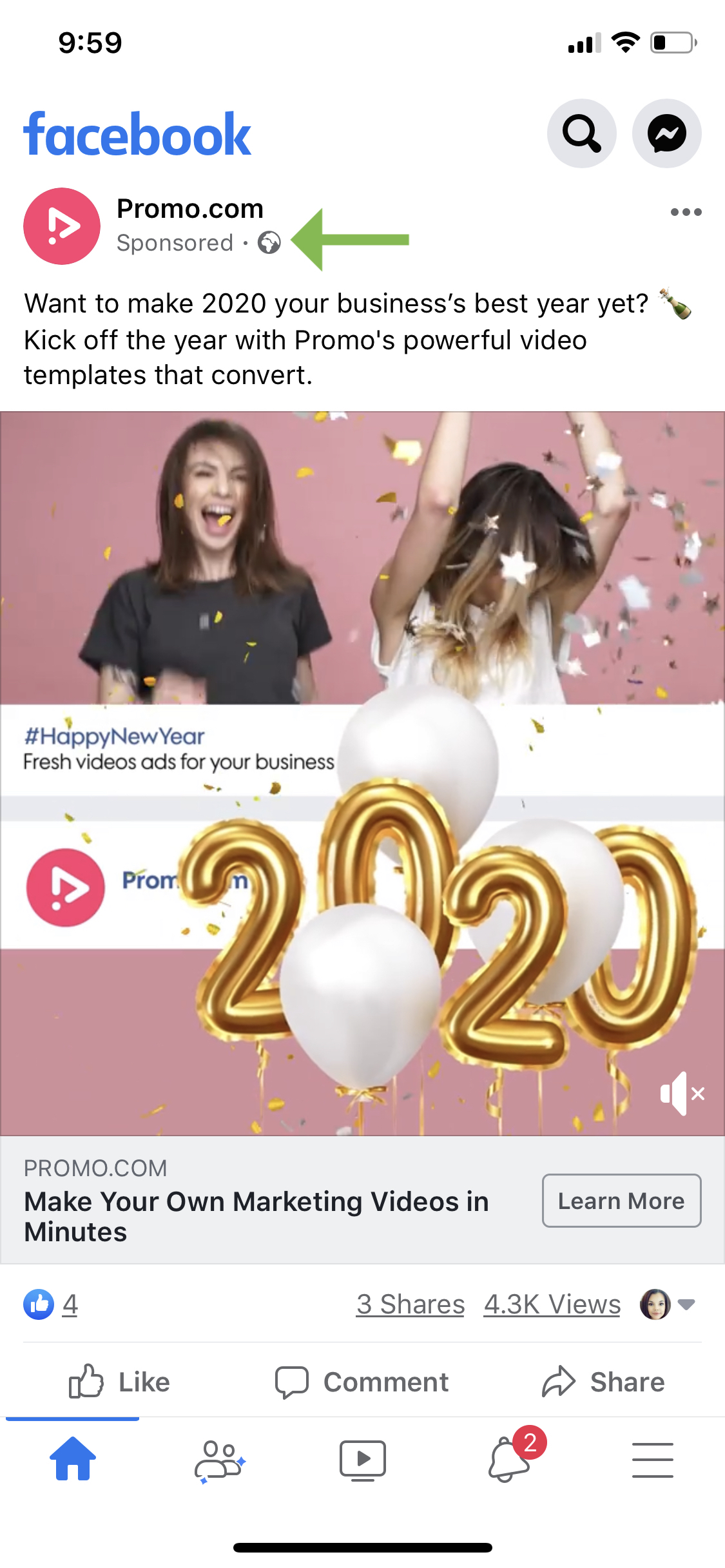
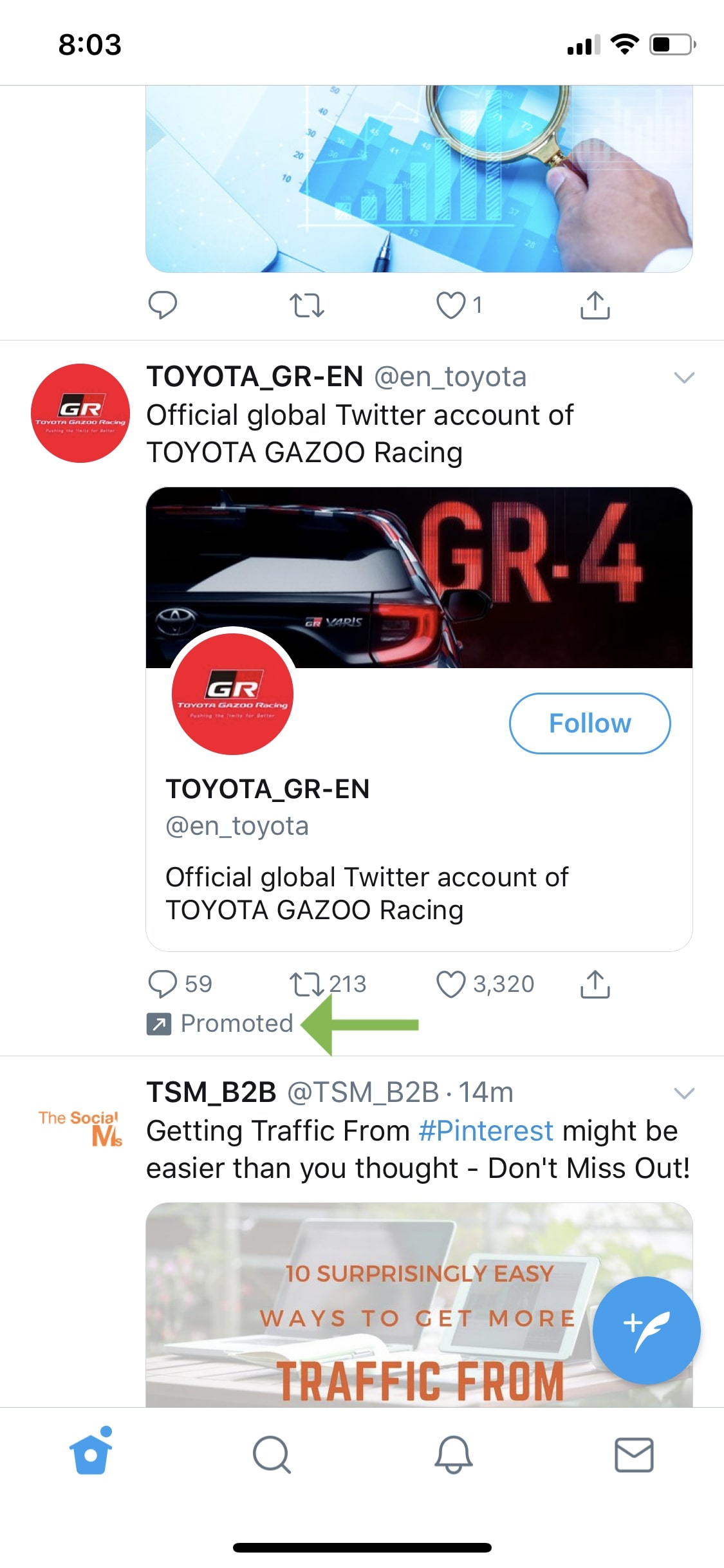
Marketing Automation
Read our complete 101 guide on Marketing Automation For Small Businesses here.
What Is Marketing Automation?
Marketing automation is the process of using software to automate marketing activities. It has the purpose of saving people precious time and eliminating human error.
Not sure how to get started and which tools to use? Read this blog dedicated to marketing automation.
Here is a list of 3 things you don’t have to do manually in 2021:
-
You can send email marketing campaigns automatically
Email automation tools allow you to automatically send out emails. This can be newsletters for subscribers, confirmation emails, and really all different kinds of emails there are you want to send out.
Automation tools also help you keep your list of contacts up to date and add and remove contacts. They can help you to group your audience and assign different tags to them and customize communication, all automatically once you set it up.
This is also great for lead nurturing. That way you can send out specific content to people who e.g. downloaded your ebook. -
You can automate posting on social media
When you want to be seen and known and build a loyal following on social media, you need to be super active and put yourself out there and engage.
This involves posting frequently and greeting new followers with a direct message for example. Doing this manually is almost impossible at a certain stage and even if you could, why would you?
Social media scheduling tools allow you to manage, time, customize and preschedule your content for all your social media channels for you. Thanks to that you can spend your valuable time focusing on your content marketing strategy. -
You can put tracking and reporting on autopilot
Marketing automation helps you get a perfect overview of all the things involved in your campaigns. The people, meetings, phone calls, messages, web pages and content. It keeps track of your performance and progress over time and serves you the numbers and statistics.
This helps you measure your ROI and grow revenue faster. You’ll get much needed insight into what’s working and what’s not and understand the impact on your bottom line.
Check out the best marketing automation software for small businesses: ActiveCampaign.
Online Public Relations (PR)
Public Relations (PR) is the practice of deliberately managing the communication between an individual person or an organization and the public.
There are certain things businesses like to keep private because it’s in their best interest not to disclose their strategy or budget to the public. And there’s other things that business like to communicate publicly to influence how they are perceived.
The spread of information between a business as an organization and the public is best managed by professionals to minimize the risk of dropping a brick.
Online PR is simply PR done online, just like digital marketing is simply marketing.
The practices an online PR specialist does to get good PR for your business are securing mentions in digital magazines or blogs, websites, and other publications that are content based and reputable.
Here are some actionable online PR tips:
-
Reach out to journalists, writers, bloggers, reporters, authors and editors via
social media
Talk to people and be genuinely interested in them and develop a relationship.
The squeaky wheel gets the grease. Don’t wait for people to discover you.
Make your message as personal as you can and don’t use a template you could send out to anyone. Press people are still people with human needs to be pleased like the desire to be appreciated.
Learn more about communication and how you get what you want here.
Also make sure to properly evaluate the publications and only reach out to media opportunities you can be proud of being associated with. -
Engage with your online customer reviews and the comments on your website
underneath your blog or social media posts
Engaging with your customers through the reviews they leave you helps you humanize your brand.
Make people feel important and let them know their feedback is appreciated and makes an impact. This goes also for comments underneath your posts and everything. PR is communication and communication, in this case, requires conversation.
Make sure to use language that protects your reputation, even with the worst reviews and don’t hesitate to ask questions back.
Find out how to get more and better customer reviews here.
Enhanced Offline Digital Marketing
Enhanced offline digital marketing is marketing that is done offline and enhanced with digital technology.
The electronic billboards on Times Square in NYC and tablet ordering at McDonald’s fall under this category. Other examples include digital product samples, software demos, and PC magazines.
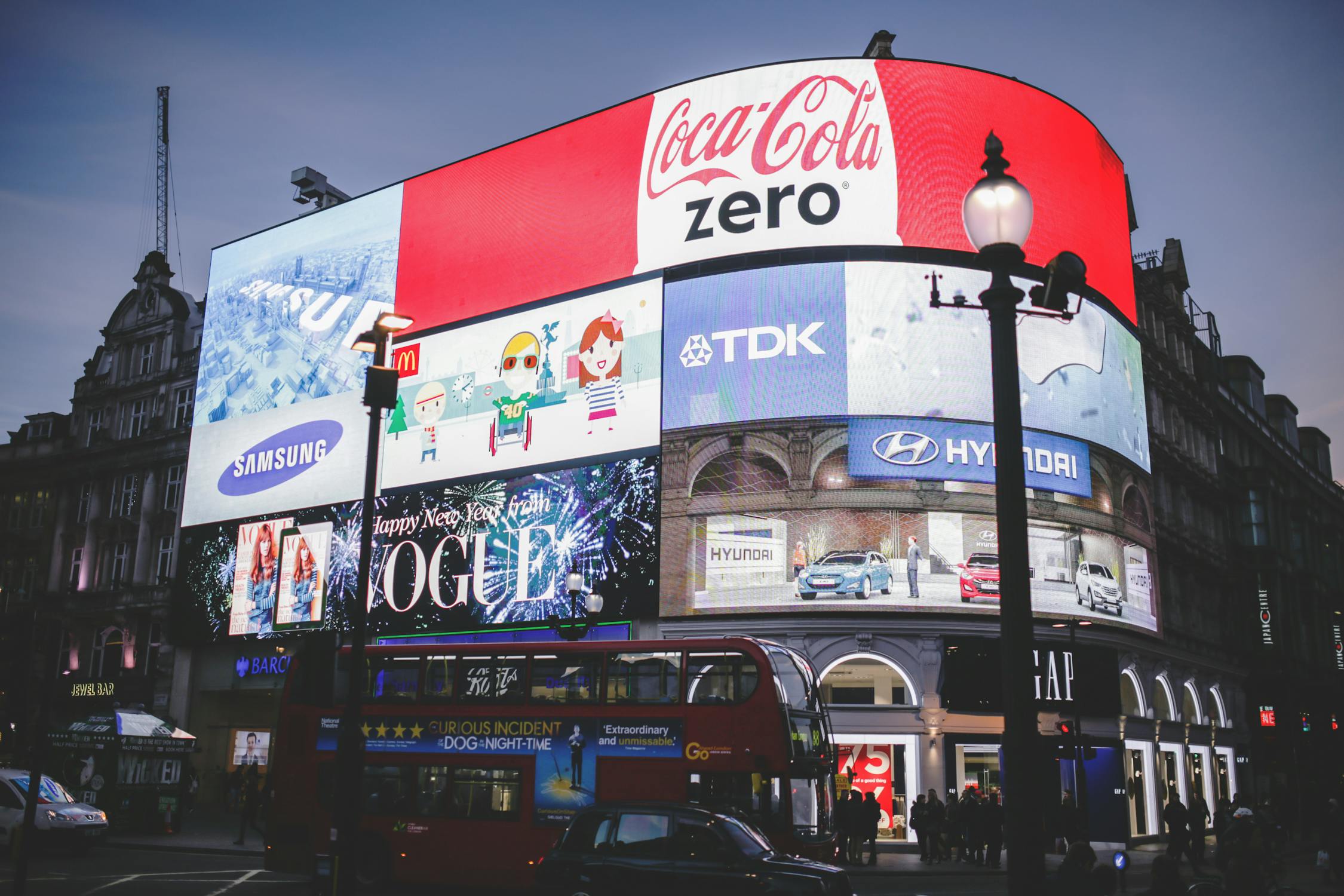
TV Marketing & Television Marketing
Let’s face it. People don’t watch TV anymore like they used to. This is why television commercials, product placements, and TV show sponsorships are becoming less effective in comparison to other digital marketing techniques.
TV marketing has another big downside. It’s generic. You don’t know who the person sitting in front of their television and watching is, so you can’t target them directly and in a personalized way. You don’t even know if they are interested in your product or service altogether.
The efficiency of TV ads has gone down rapidly because people are used to seeing personalized ads that appear more relevant to them.
In contrast to watching TV, video platforms like YouTube are free and streaming services like Netflix, Hulu, Amazon Prime, etc. are continuing to gain more popularity.
If a TV commercial is not extremely memorable and can go viral like a Superbowl commercial with famous celebrities in it, chances are that other digital marketing channels will be more effective for your small business.
Radio Marketing
Radio marketing is not dead. It’s just shifting to the internet more and more.
The options you have to communicate value to your customers as a small business are radio show sponsoring and radio ads and commercials.
Phone Marketing And Telemarketing
Telemarketing and phone marketing targets people on their phone without an internet connection which is why it’s offline digital marketing. It’s all about two things: calling and texting.
Cold calling has been around since forever and is still a valid approach. However, it doesn’t have the scalability of social media or email.
Here’s why we don’t recommend it. A customer has about 7 touch points with a business before he or she is ready to buy. With every touch point a person learns more about you, sees a different side, develops trust, sees your expertise in action, and develops emotions for your brand and can like it and identify with it. Not having that simply decreases the odds or you closing dramatically.
In the business to consumer (B2C) business, this is already hard. In the business to business (B2B) business it is even harder because B2B is all about connections.
A touch point is any time a potential customer or actual customer comes in contact with your brand. Whether that is before, during, or after they purchase something from you.
A person may find your business online, then see an ad, see your ratings, read reviews, watch a video of yours, retweet and like a tweet, visit your website, read your blog post, like your picture, and talk to your customer service, before he or she shops at your retail store. Those are 10 examples of touch points.
What works better than cold calling is texting. Every single phone has a text messaging app or function, and then there’s super common apps like WhatsApp.
Most people get a notification when they get a text message. And aren’t we addicted to checking if we have new notifications?
What this means is that a text message is almost a guaranteed read. Texts are a great way to reach people.
Think of the alert SMS when your pizza delivery is on its way or being delivered, the SMS you get your mobile TAN in, etc. All of those options give you the chance to include a marketing message in them.
Political parties use SMS messages to send positive information about their candidates and negative messages about their opponents.
In general, phone marketing is not leveraged a lot by small businesses which means there is a good chance to stand out.
How Does Digital Marketing Work?
Digital marketing works like traditional marketing works. It works by effectively communicating the value you have to offer to prospects who then become customers once they see the value.
You want to seek to develop a mutually beneficial relationship with your prospects, leads, and customers. This is great because digital marketing allows you to do that in the best way.
People today recognize the power their voice has, they are aware that they can make or break the success of a company, they don’t give you their email addresses just like that anymore, they will speak up when they are not satisfied, they want to know what’s in it for them and want to test your product / service for free or try a sample. They are more informed consumers, thanks to digital media.
Digital marketing has replaced most traditional marketing tactics because it's designed to reach the consumers of today.
How To Do Digital Marketing: Create A Digital Marketing Strategy With Digital Marketing Tactics In 6 Simple Steps
Step 1: Define digital marketing goals
All your digital marketing efforts will be based on the digital marketing goals you set for your small business in the beginning. You will create your digital marketing strategy around your goals and measure the effectiveness of each action by how much closer it got you to achieving your goals.
There are a variety of digital marketing goals you can choose from. In the beginning, when you’re just starting out with limited resources, pick 1-3 primary digital marketing goals to consistently focus on. Any more goals will make you feel overwhelmed and you’ll likely reach none of them then.
SMART goals are specific, measurable, achievable, relevant, and timely.
Here’s a list of the top 14 digital marketing goals for your small business for inspiration:
- Increase brand awareness
- Increase lead generation
- Increase sales
- Increase website traffic
- Increase authority
- Increase engagement
- Build a community
- Increase brand advocates
- Increase social proof
- increase brand reputation
- Increase positive user experience (UX)
- Increase user generated content (UGC)
- Increase market and audience research data
- Improve customer service and customer support
Examples of smart digital marketing objectives to come up with for your small business are:
- Obtain 15 customer testimonials in six months.
- Generate 1 lead on autopilot per week in 8 weeks.
- Improve website conversions by 15% this year.
- Increase organic website traffic to make up 75% of website traffic in 1 year.
- Reach an email open rate of at least 25% in each email campaign in 4 months.
- Be featured in 1 media or news outlet per month starting immediately.
- Identify 5 weak points in the conversion funnel this quarter and fix them.
- Decrease customer service tickets by 50% in 3 months.
Step 2: Identify your target audience and create buyer personas
You need to identify the group of people who have a problem that your product or service solves. Marketing the right product to the wrong people is just ineffective and frustrating.
You want to do buyer persona research and gather as many personal, professional, demographic, psychographic, sociographic, and other data and information about them as you can. The more detailed and clear your picture of your ideal buyers is, the better digital marketing campaigns you can create. A buyer persona combines all of this in a handy profile. You can learn more about buyer personas in our ultimate guide and use our free buyer persona template to get started.
Once you’ve identified your ideal customers, you want to verify product-market-fit. Test them, interview them, survey them on social media, create polls, and talk to them.
Only when you know exactly what they need and want, what struggles they have with other solutions, what you want to avoid, and how much they’re willing to pay for it, should you start creating a minimal-viable-product (MVP) or minimal-viable-service.
This information is crucial to plan the features of your MVP, determine the budget you need, determine the time it takes, and decide on a priority list that actually makes sense. You don’t want to waste any resources. You want to maximize your return on investment (ROI) and become profitable as soon as possible.
Marketing requires a lot of testing, measuring, and tweaking to predictably and constantly be profitable. The more data-driven your decisions are, the more rewarding are your results.
Step 3: Make a digital marketing strategy in which you decide on digital marketing channels to use, digital marketing tactics to apply, and the resources needed
You’ve learned about all the types of digital marketing and digital marketing channels in detail in the chapters above. Now you got enough insights to pick the ones most suitable for your small business, for what you want to achieve, and where you know your target audience is susceptible for your messaging.
Digital marketing tactics are the actual action steps that you take to reach the goals of your digital marketing strategy. When you decide on tactics, keep in mind the budget you have for paid tactics, and the amount of time it takes for organic, inbound tactics. Strike a good balance between paid and free digital marketing tactics. Your strategy should be as realistic and achievable as your goals.
Here are some examples of digital marketing tactics for the example goals of step 1:
- Obtain 30 customer testimonials in six months: Include a prompt to leave a testimonial with a 10%-off-your-next-order-discount as an incentive in the automated order confirmation email. Perform A/B tests to tweak the copywriting to reach the goal.
- Generate 1 lead on autopilot per week in 8 weeks: Optimize our landing page for SEO and rank it to receive enough traffic to get one guaranteed optin of a qualified lead per week in 8 weeks. Use an SEO audit checklist to ensure the keyword research, on-page, off-page, and technical optimization, etc. are done right.
Step 4: Determine the key performance indicators (KPIs) and measurement metics to measure the success of your digital marketing efforts with
Be sure not to fall for vanity metics like likes or the total numbers of something. The best performance metrics to track are rates, ratios, and relations - especially conversion rates. Out of how many people, how many have performed the desired action, in a specified time frame? And what percentage does that make up? And how does it compare to the previous time period and previous campaigns?
Here are some example measurement metrics for digital marketing goals:
- Brand awareness: Branded searches on Google, mentions online, direct traffic, referral traffic, UGC
- SEO: organic traffic, ranking positions, keywords ranking, backlinks, website conversions
Step 5: Create engaging content you can repurpose for multiple digital marketing channels, in multiple media formats, and that are optimized for mobile
Content is powerful and the benefits of content marketing are so remarkable that it can’t miss in your small business digital marketing strategy.
When creating content, focus on a topic you know is requested by your target audience. Make each piece of content as evergreen as you can and ensure it solves a problem, is actionable, is share worthy, can be repurposed for different channels, and can be converted into different media formats. In addition to that, it’s a must that each piece of content includes a compelling offer with a clear call-to-action (CTA) of next steps to take to get it, and clear way to opt-in.
Step 6: Iterate based on the analytics you measure
Regularly measure your performance based on the KPIs you’ve set in step 4 and iterate. When you tweak and iterate, be sure to only change one characteristic at a time and leave all other variables constant. This way you can clearly and unmistakably attribute the change in performance to that one change you’ve made. Efficient digital marketing has no place for guesswork. Testing one change against another is called split testing or A/B testing. It makes sure your conclusions are accurate and valid.
With so many different parameters to tweak and variables to change in each digital marketing campaign, you won’t run out of possible tests you can run any time soon. This is a good thing. Embrace the learning process and keep on testing.
It’s very important to document each test you’ve performed in a spreadsheet along with the results, notes and drawn conclusions, so you don’t loose control and always have an overview at hand. This is a professional business practice, makes sure you get ahead, and protects your sanity.
Ever so often, revisit your goals in step 1. When you’ve reached a goal or your priorities in business have changed because you’ve pivoted, set new goals and create a new digital marketing strategy for your small business. And so, the cycle with the 6 steps repeats.
This is how to do digital marketing. Here you can see a handy one-sheet for a digital marketing strategy designed to reach the objective to increase brand awareness. You can create something like that for each goal you have to stay on track and keep and overview.
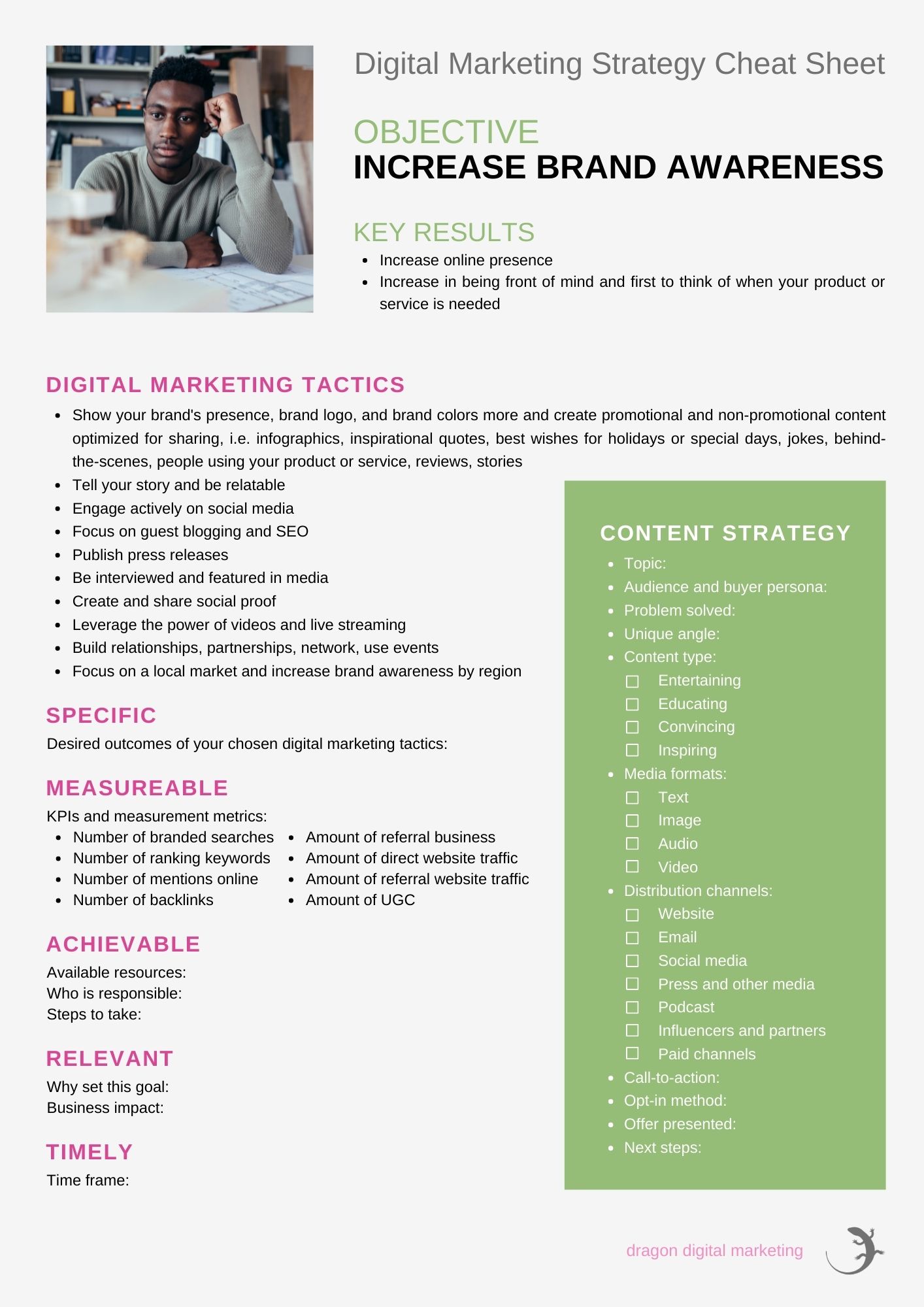
Inbound Marketing Versus Digital Marketing: Which Is It?
Digital marketing and inbound marketing are easily confused. Let’s clear up this confusion.
Digital marketing is an umbrella term for any form of marketing that uses technology and electronic, digital devices - no matter if it is inbound or outbound, online or offline. Inbound marketing is an umbrella term for any form of marketing that attracts customers by creating valuable content and experiences tailored to them. Inbound marketing forms connections people are looking for and solves problems they already have. This makes inbound marketing more of a business methodology because it is based on the core belief that you don’t want to interrupt people and be pushy and salesy, but attract customers by showing them value. Outbound marketing interrupts your audience with content they don’t always want. Both, inbound marketing and outbound marketing can be done digitally - online and offline - as well as traditionally.
A digital marketing example that is categorized as inbound marketing and online digital marketing is sharing content on a website.
A digital marketing example that is categorized as inbound marketing and offline digital marketing is announcing free samples on a TV screen in your store.
A digital marketing example that is categorized as outbound marketing and online digital marketing is sending cold emails.
A digital marketing example that is categorized as outbound marketing and offline digital marketing is making cold calls using a telephone.
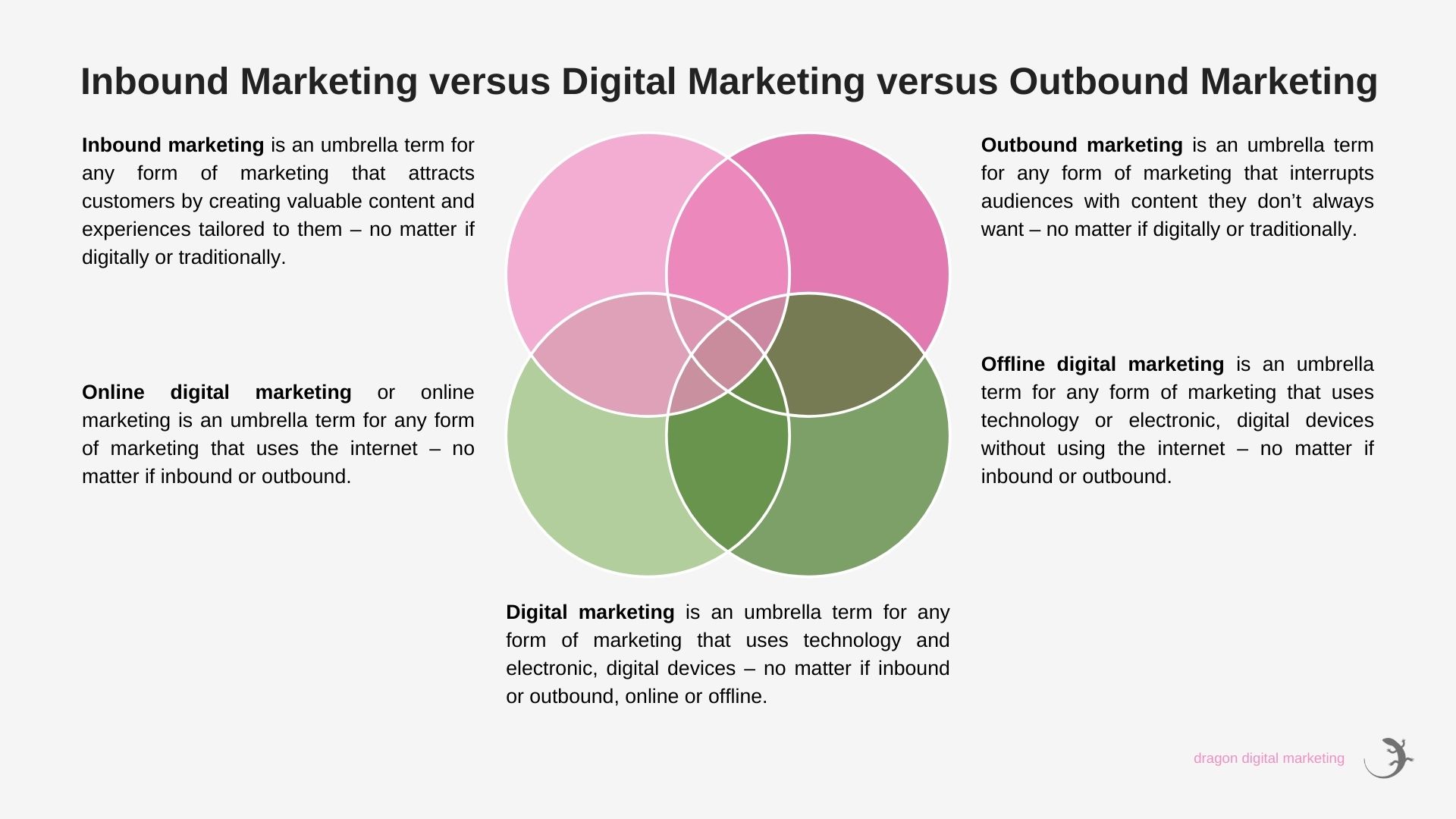
Does Digital Marketing Work For All Businesses?
Yes. Digital marketing can work for virtually all businesses, the exceptions being so rare that they can be neglected. Digital marketing can work for anybody who sells goods or services, or who spreads and promotes ideas.
There are so many types of digital marketing and digital marketing channels that you can create an almost infinite number of unique digital marketing strategies with digital marketing goals and digital marketing tactics that work for any business of any size, in any industry, with any audience.
The future of life is digital. And the future of marketing is digital marketing.
Digital Marketing Challenges
Digital marketing is the future of marketing and great in so many ways. However, there are some digital marketing challenges.
Digital marketing channels can change rapidly, and small business owners as well as digital marketers have to keep up with how these channels work, how they're used by receivers, and how to use these channels to effectively market their products or services.
It's becoming more difficult to capture people’s attention because they are increasingly inundated with competing brand messages.
It can also be challenging to analyze the vast troves of data that is captured, and then exploit this information in new marketing efforts.
The digital marketing challenge of capturing and using data effectively highlights that digital marketing requires an approach that’s based on a deep understanding of the customers. Therefore, creating detailed buyer personas and keeping them updated is the basis of being successful in the digital world.
Digital Marketing Examples
Here are 5 amazing digital marketing examples that will inspire your next campaign.
Digital Marketing Example #1: Video Marketing
Lego's 'Rebuild the World' marketing campaign is a great example of digital marketing. The entertaining marketing video promotes the Lego brand by sharing the brand story and brand messaging. It delivers the essence of the Lego brand and shows what is possible with Lego. You can watch the video below.
Digital Marketing Example #2: Social Media Marketing
McDonald's Twitter profile is an example of great social media marketing. McDonal's always shares funny and relatable Tweets in a casual brand voice their customers love. It promotes the McDonals's brand indirectly, while not being pushy and just talking about their products. It keeps McDonald's front of mind during your day in a positive and non-promotional way and refreshed your mood with a dose of comedy and creativity.
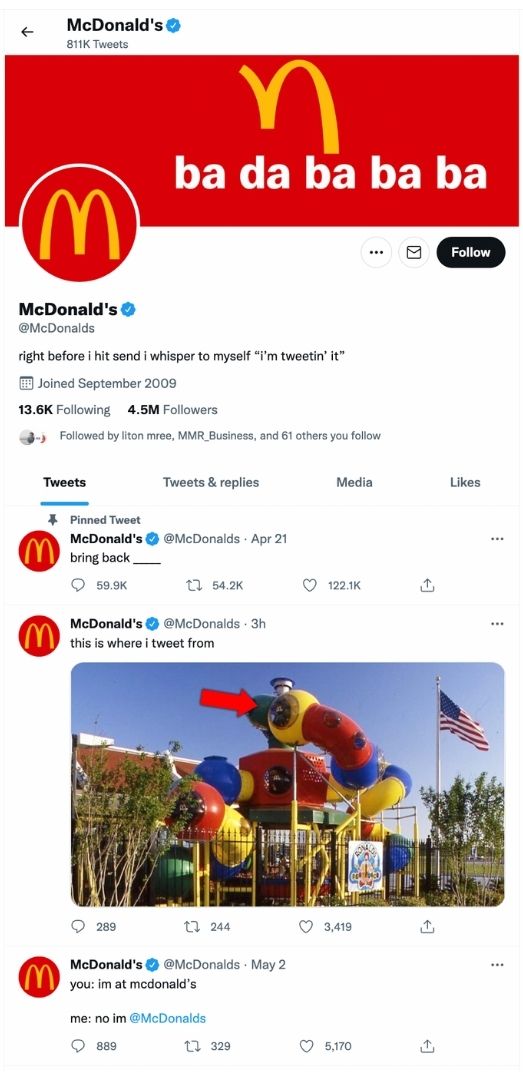
Digital Marketing Example #3: Lead Generation With Lead Magnets
ActiveCampaign's free marketing tools are yet another great digital marketing example. There are dozens of helpful tools, templates, generators, worksheets, blue prints, cheat sheets, and other resources people can download for free. This allows ActiveCampaign to capture the contact information of new potential customers of their small business marketing platform and continuously generates leads. There is some really good and valuable stuff. You might want to check out the resources yourself.
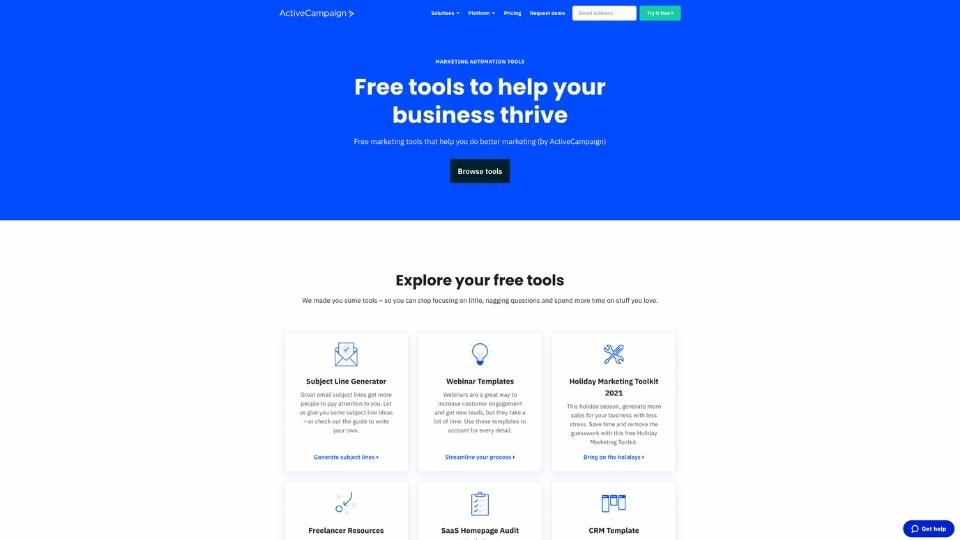
Digital Marketing Example #4: Blog Marketing
Disney's blog is a great example of digital marketing. They share news and exclusive insights and background knowledge about their movies, shows, and more. It helps fans to stay in touch with what's coming next, get insider information, and helps build Disney's omnipresence online. Even the biggest brands leverage blogs to get SEO benefits and increase their brand awareness and online presence.

What Does A Digital Marketer Do?
Digital marketers communicate value through electronic devices using digital technologies.
There are a variety of channels digital marketers can use to generate leads, raise brand awareness, and drive traffic and sales. Learn more about what digital marketing includes.
A digital marketer typically focuses on a different key performance indicator (KPI) for each digital marketing channel. This makes it possible to measure the performance across each channel properly and reliably.
Here are some more examples of what different digital marketing specialists do.
The Roles And Tasks Of Different Digital Marketing Specialists
-
SEO Marketing Specialist
An SEO is a person who gets your business to rank on Google. This increases your visibility in the organic (un-paid) search results.
An SEO works super closely together with a content marketer to ensure the content they produce performs well on search engines.
Many SEOs are also technically inclined and e.g. know how to make your site load faster, or in which HTML elements keywords are waved in best for the maximum effect.
Main KPIs: Number of organic sessions, pages per session, leads and conversions, bounce rate, keyword ranking increases, average session duration, time on site, page load time, top exit pages, crawl errors, average ranking position -
PPC Advertising Specialist
A PPC ad specialists creates and manages pay-per -click ad campaigns. He or she knows the specifics of different platforms by heart and knows what it takes for an ad to perform well on each platform.
Facebook for instance has a very strict advertising policy that does not allow ads to imply anything that could natively affect the user experience in the slightest way. Thumbnails and ad copy thus can’t address a pain point and then offer a solution as usually done in advertising.
YouTube makes you only pay after a video ad has been watched for 30 seconds, so a specialist for that knows how to get a message across best in under 30 seconds to get you free clicks.
Because different platforms are so specific, often times PPC specialist focuses only on one platform to be able to get you the best results for your online ads.
Main KPIs: Clicks, Google quality score, lifetime value, return on ad spend, conversion rate, Cost Per Click (CPC), Cost Per Lead (CPL), Cost Per Sale (CPS) -
Content Marketing Specialist
A content marketer creates the content you put on your website, publish on your blog, and post on social media.
He or she keeps track of your posting schedule and blogging calendar, does research on what topics are the most requested and searched for on the internet, and creates pieces of content that meet the needs of the audience better than any competitor.
A piece of content can be anything including an ad or a video as well. Thus content marketers often work closely with other marketers and also other specialists from different departments. This ensures the info about the products and services is correct and that you have high-quality promotional materials for all your endeavors on every channel.
Main KPIs: Number of clicks, page views, downloads, subscribers, interactions, inbound links, time on site, overall traffic, conversion rate -
Social Media Marketing Specialist
Social media marketers design a posting schedule for your content. They plan which of your written and visual pieces of content to post when and on which channel. They also test how different phrases and images influence engagement and get more likes and shares, as well as what days of the week and what times of the day certain posts reach more people.
A social media marketer also work closely together with a content marketer to coordinate and fine tune the strategy.
Main KPIs: Reach, number of clicks, follows, impressions, likes, comments, pile visits, and shares, number of leads and customers generated -
Marketing Automation Specialist
In marketing automation, there are a variety of tools that help humans automate basic and repetitive tasks. A marketing automation specialist knows his or her software really well. He or she knows how to configure it and also has the expertise to advise and help choose what tool to work with best for a task to be automated.
Automated tasks can be tracked and analyzed accurately which allows the entire marketing team to better understand customer behavior and measure growth.
Because many operations might be executed separately from one another, a marketing automatic specialist groups these digital activities together with the data that he or she has. That way you get detailed and precise insights into the performance of our campaigns.
Main KPIs: Rate of qualified lead generation, average value of qualified leads, conversion rate -
Email Marketing Specialist
An email marketer uses email to communicate valuable messages to your leads and customers.
This nurtures the relationships and keeps people informed and updated. He or she may also come up with promotional offers and coupons to encourage leads to buy and customers to repurchase.
Email marketers are also responsible a great deal for customer loyalty and brand awareness. His or her high quality email newsletter and email series with valuable content, triggers positive emotions in people towards your company.
An email marketer is typically a good writer and works closely with a content marketer. He or she knows how emails have to be set up to meet international standards and guidelines and avoid the spam folder. He or she also knows which type of email copy works best with which segment of contacts and how to maximize the open and click through rate of the emails.
Main KPIs: Delivery rate, delivery quantity, total vs unique open rate, total vs unique click rate, bounce rate, conversion rate, subscribe/unsubscribe rate -
Affiliate Marketing Specialist
An affiliate marketer manages the network of influencers and affiliates your company works with and designs the affiliate program.
He or she does research and chooses the people who have clout and influence in your industry and also fit to your company’s identity and reaches out to them to offer them a partnership.
He or she calculates and determines the commissions that affiliates earn for promoting your products and services and manages the communication with them.
An affiliate marketer also keeps track of each affiliate’s performance and evaluates the success. He or she works with tools that give you an overview over the numbers and allow you to track interactions with the different affiliate links and where and how the affiliates use them.
Main KPIs: New affiliates approved, percentage of coupon vs content affiliates, percentage of new customers, average order value, percentage of affiliate sales vs overall sales, return on ad spend, total revenue by affiliate -
Online PR Specialist
An online PR specialist creates and maintains a favorable public image for your business.
He or she communicates news and updates, projects you work on, programs you do, and accomplishments you have made to the public in a strategic way.
He or she know how to deal with the press and is tasked with fielding media questions. A good online PR specialist will get your image where you want it to be and makes you seen how you want to be seen by getting you good press and avoiding sand traps.
He or she is a great communicator and knows how to pitch stories to media channels, prepare media kits, write press releases, and organize press conferences.
Main KPIs: Potential reach, earned traffic, social engagement, media presence, domain authority, quality of coverage, outreach success rate
What Is A Typical Digital Marketing Salary?
According to Glassdoor (2022), a digital marketer in the United States makes between $37K on the low end and $99K on the high end, with the average salary being $60K a year.
If you are looking for a digital marketing job, head over to LinkedIn or other job websites like Jooble-jobs.
B2B Versus B2C Digital Marketing
No matter if you’re in B2B, B2C, or both, digital marketing is essential for you do to in 2022.
It works for all industries, regardless of what products and services you sell, and no matter who you sell them to.
However, you do need a different strategy that’s tailored to your needs and have to include the channels that make sense for you, so you can target your ideal customers in a customized and personalized way.
Digital Marketing In B2B
In business to business (B2B), the buyers journey can be a bit longer because the person that discovers a solution doesn’t necessarily have the power to make the buying decision themselves.
Business customers typically want to talk to a sales person before buying. It will be your task to generate high-quality leads to increase the close rate and land more accounts.
When you're in B2B, make sure your small business website is high-quality and looks professional. Also leverage LinkedIn as a channel for your social media marketing. Don’t underestimate YouTube for B2B marketing either. Be present where the demographic you target spends their time online.
Digital Marketing In B2C
In business to consumer (B2C), consumers typically don’t feel the need to speak to a salesperson before buying. This can make the buyers journey a bit shorter.
A persuasive and strategic online presence makes people purchase sooner. When you give value to your audience, present yourself as committed to help them, are consistent, focus on building authority, are authentic, personable, likable, manage to create a sense of urgency, and convey a feeling of scarcity, you’ll be able to accelerate your buyers journey many times over.
For social media marketing, consider social media platforms like Instagram, Pinterest, Snapchat and TikTok because they are more casual and informal.
How Long Does It Take To See Results From Digital Marketing?
You can see results from digital marketing immediately. There are short-term, mid-term, and long-term digital marketing tactics. How long it takes to see results from digital marketing depends on the components of your digital marketing strategy, how well the strategy is executed, how many resources you can dedicate to it, and on the competitiveness of your industry.
How Much Does Digital Marketing Cost?
Digital marketing for a small business can cost anything from zero dollars to billions of dollars, depending on what you want to do on which channels and by whom.
In 2021, the average marketing budget of a small business in the USA according to the Clutch and The Manifest polls, has ranged from 10 - 50 thousand dollars a year. And they all said that in the next year they plan to spend even more on advertising, marketing, and promotion.
How About Leadership In Digital Marketing?
Leadership plays a key role in digital marketing in many ways as it is the focal point of all marketing efforts for many businesses today. For small businesses and startups, it is often the only marketing effort.
Digital marketing is a driving factor in the success and growth of all businesses in the digital age of today. (If something can't be found on the internet, does it even really exist?)
Leadership is a driving factor in the success of a fast-growing business in the dynamic and constantly changing and evolving digital age. This means that a modern leader has to be flexible, able to make good decisions fast, and be proactive in the face of marketing challenges and other challenges.
A leader is someone that knows the way, goes the way, and shows the way. A successful digital leader fruitfully copes with the digital transformation of technology and people.
Embracing progress and change and making it a part of your company culture will give you a competitve edge, help you to overcome marketing challenges, and become a thought leader.
Learn more about must-have communication and leadership skills for small business owners with a team in this blog post.
What Is The History Of Digital Marketing?
In 1895, the Italian inventor and engineer Guglielmo Marconi (*1874 - ✝1937) developed, demonstrated, and marketed the first successful long-distance wireless telegraph. And in 1901, he broadcast the first transatlantic radio signal.
In other words, he invented the radio and also thought of it as a way to use this new digital technology for marketing purposes. This marks the beginning of digital marketing.
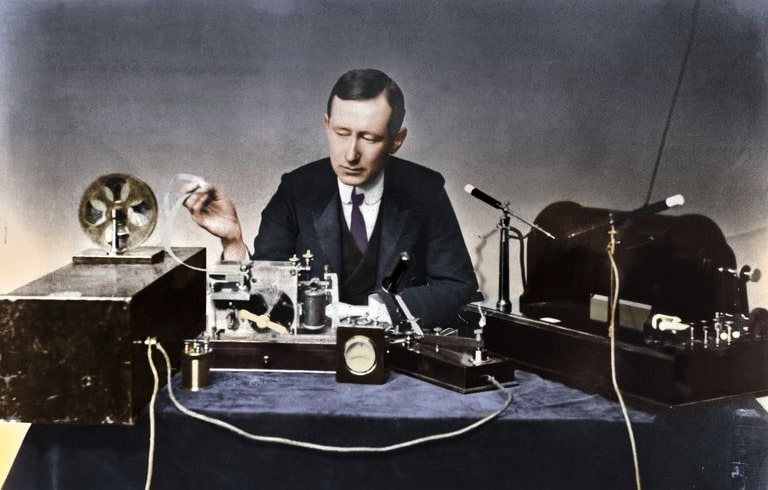
Digital marketing was around long before the internet, as offline digital technology was used by businesses to promote themselves.
The idea of radio as an entertainment device took off in the 1920s, which was when the radio became available to the general public.

The first live broadcast was from an opera performance at the Metropolitan Opera in New York City. Broadcasting the show on the radio made the people who listened want to buy opera tickets. Soon more people recognized the huge opportunity of digital marketing.
Conclusion
Digital marketing is not all online. In fact, digital marketing has been around way before the internet. There are a bunch of offline digital marketing tactics, however, today online digital marketing makes up a way bigger part. Digital marketing gives small businesses many opportunities you to grow and scale – even with limited resources and on a budget. After all, digital marketing is simply marketing. And marketing is effectively communicating the value your solution provides to your target audience.
A well-rounded digital marketing strategy includes a variety of digital marketing channels with clearly defined goals for each channel. The digital marketing tactics have to continuously be measured and adapted to ensure lasting success.
Digital marketing is changing and evelving. It's our mission at Dragon Digital Marketing to help small businesses build and online presence and brand, grow and scale their small business, and successfully learn how to overcome marketing challenges.
What's your favorite part about digital marketing? Let us know in the comments if you learned something new.
Get Started With Leveraging Digital Marketing
Try ActiveCampaign – the #1 automation, email marketing and CRM platform built with small businesses in mind.
 Try ActiveCampaign Today For Free
Try ActiveCampaign Today For Free
